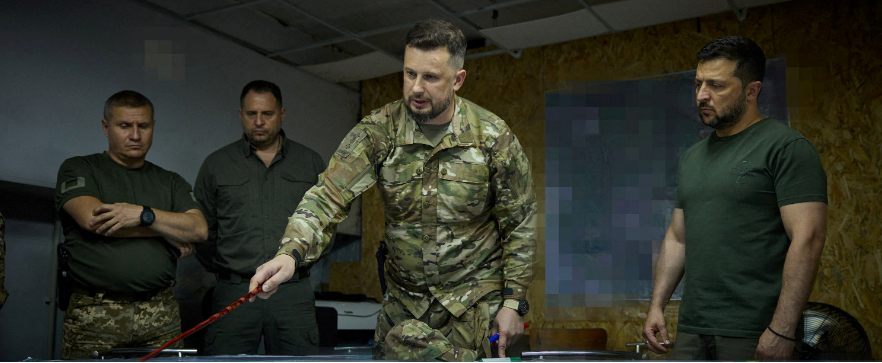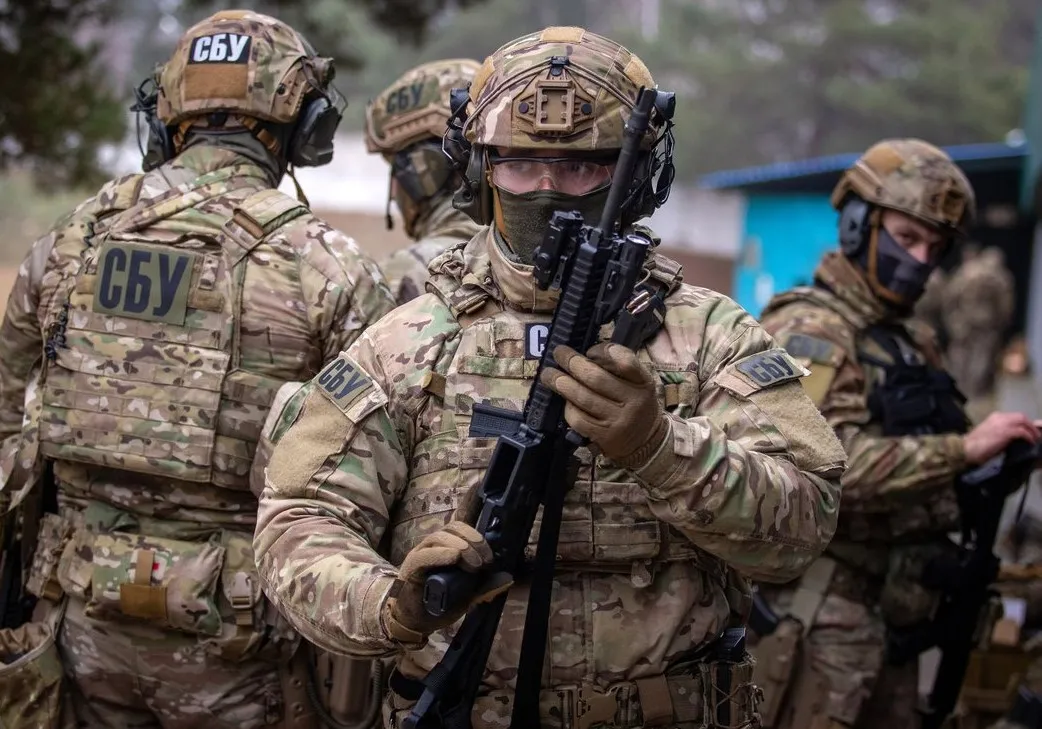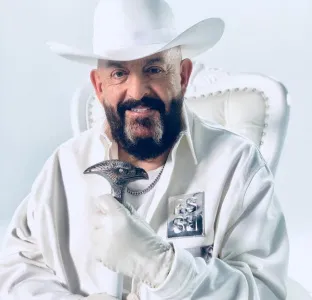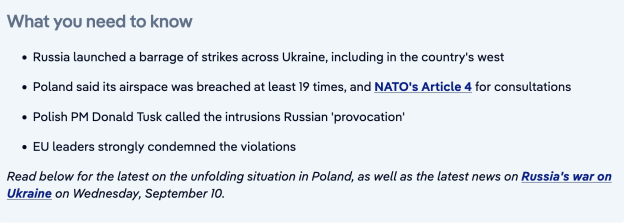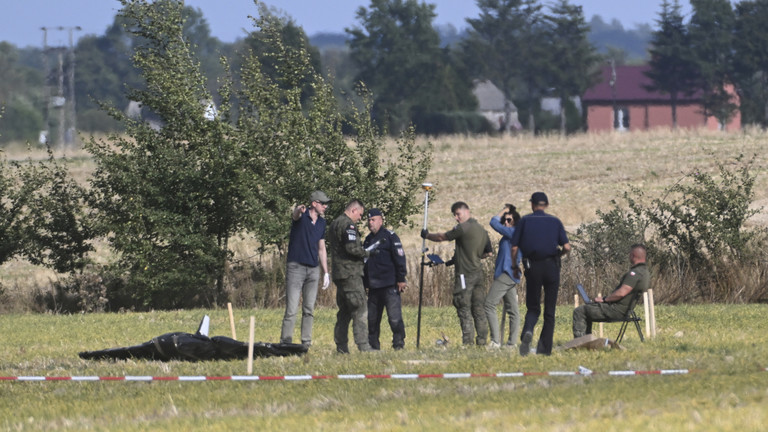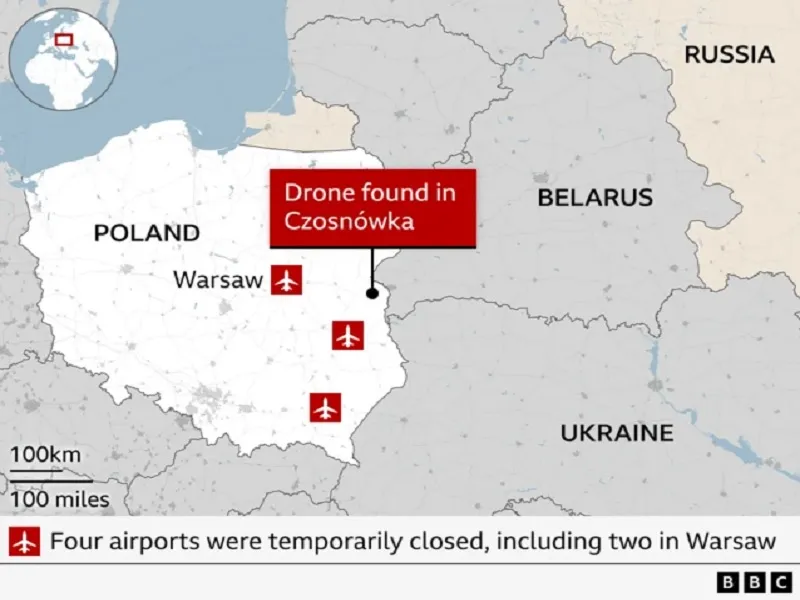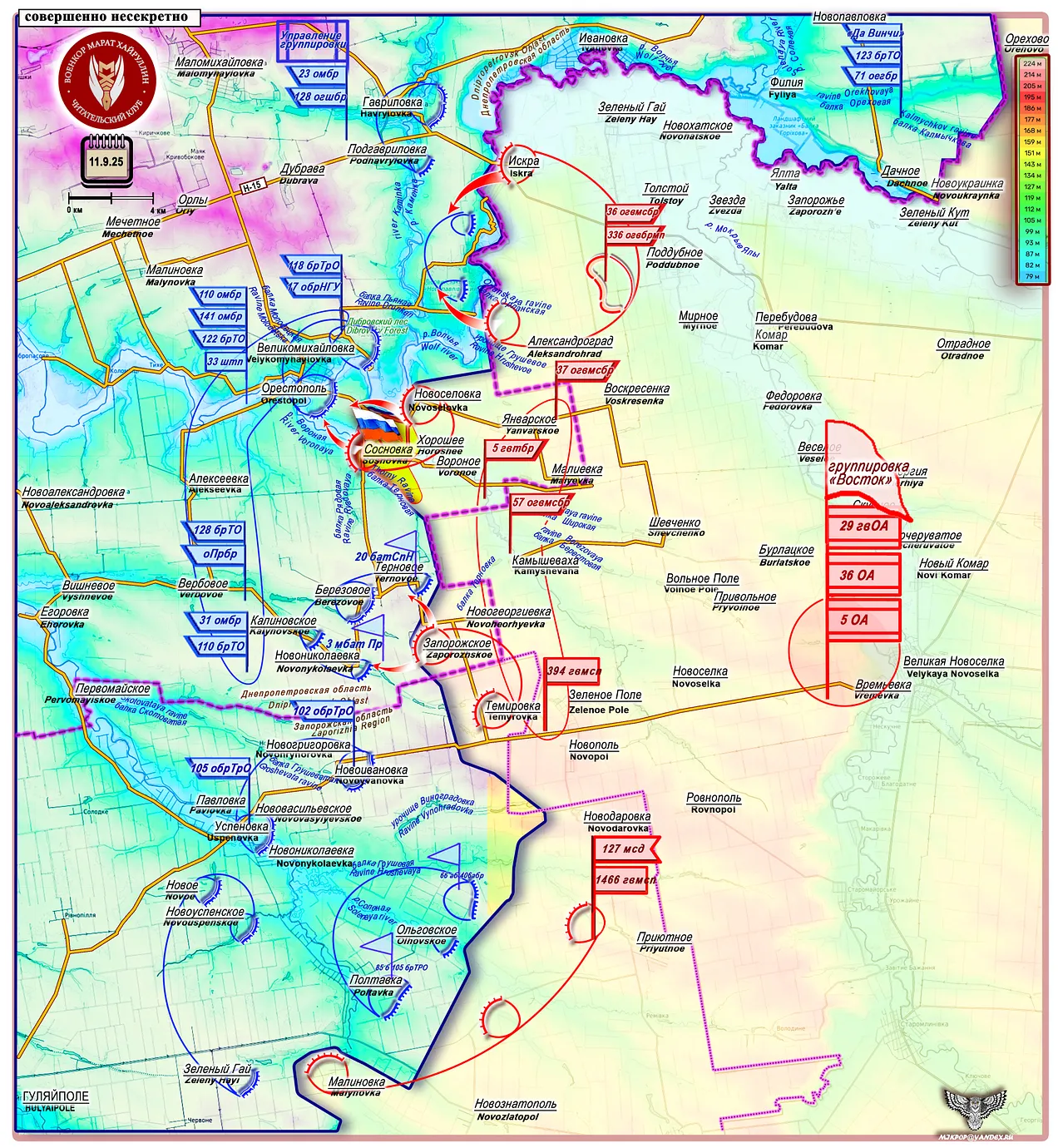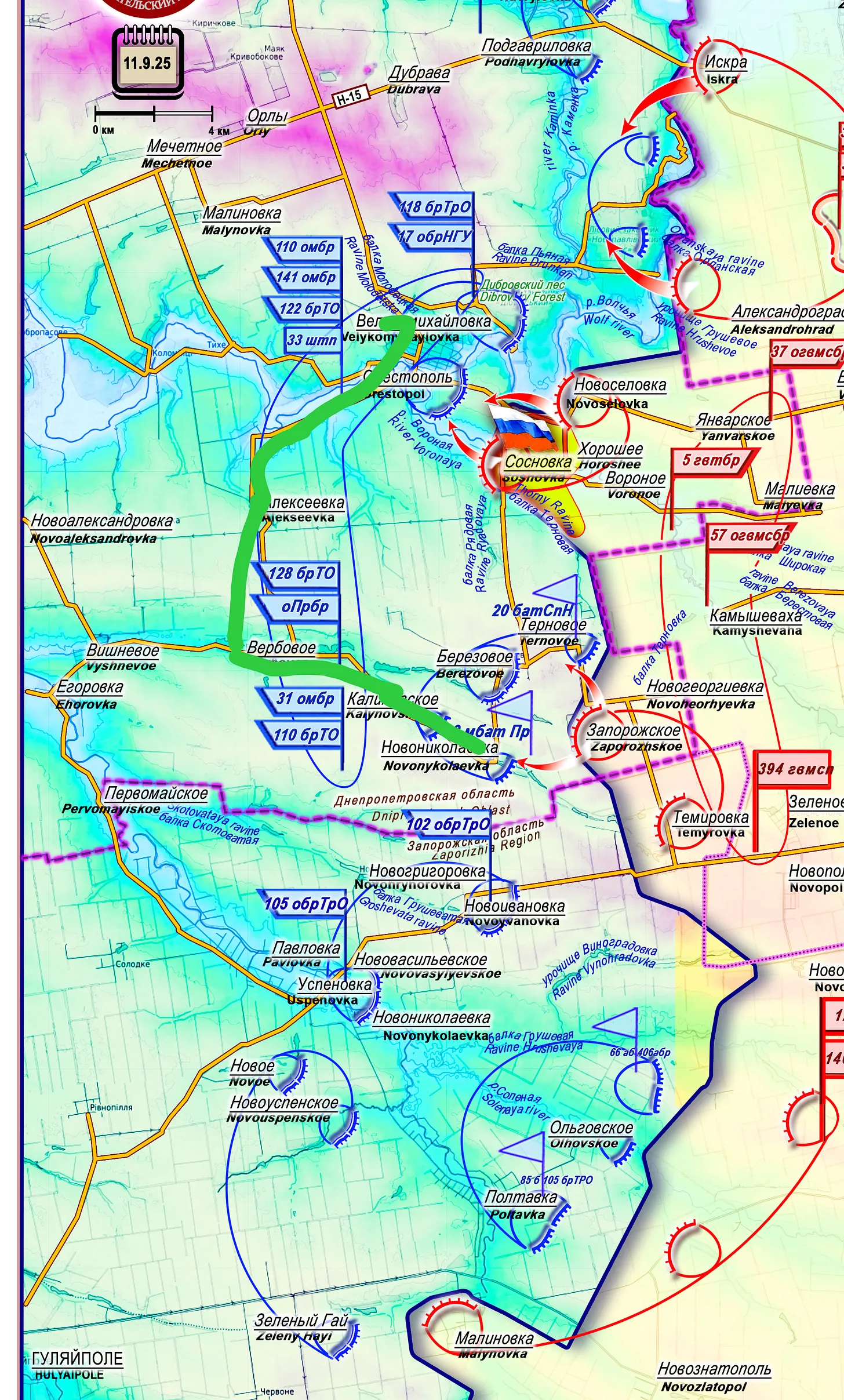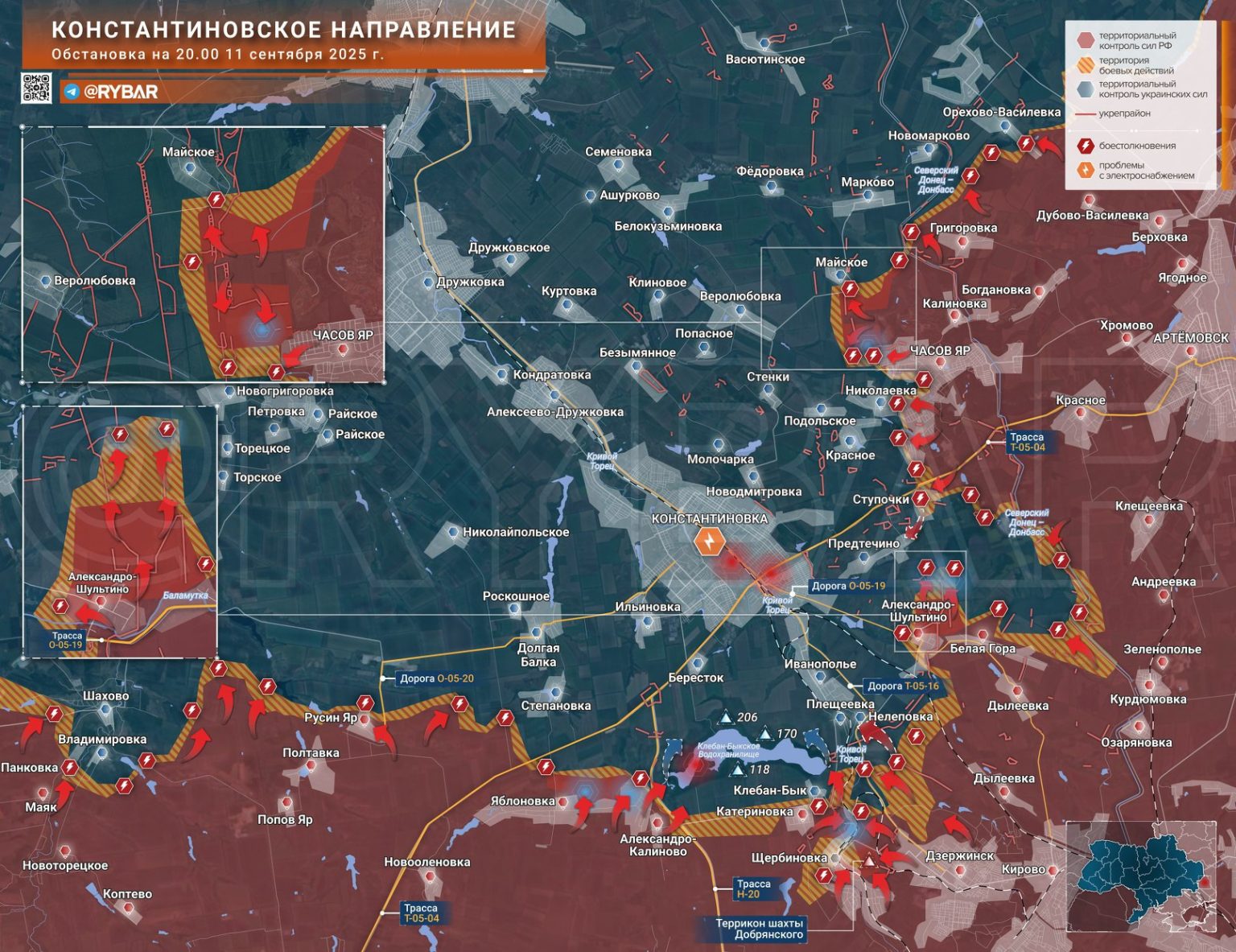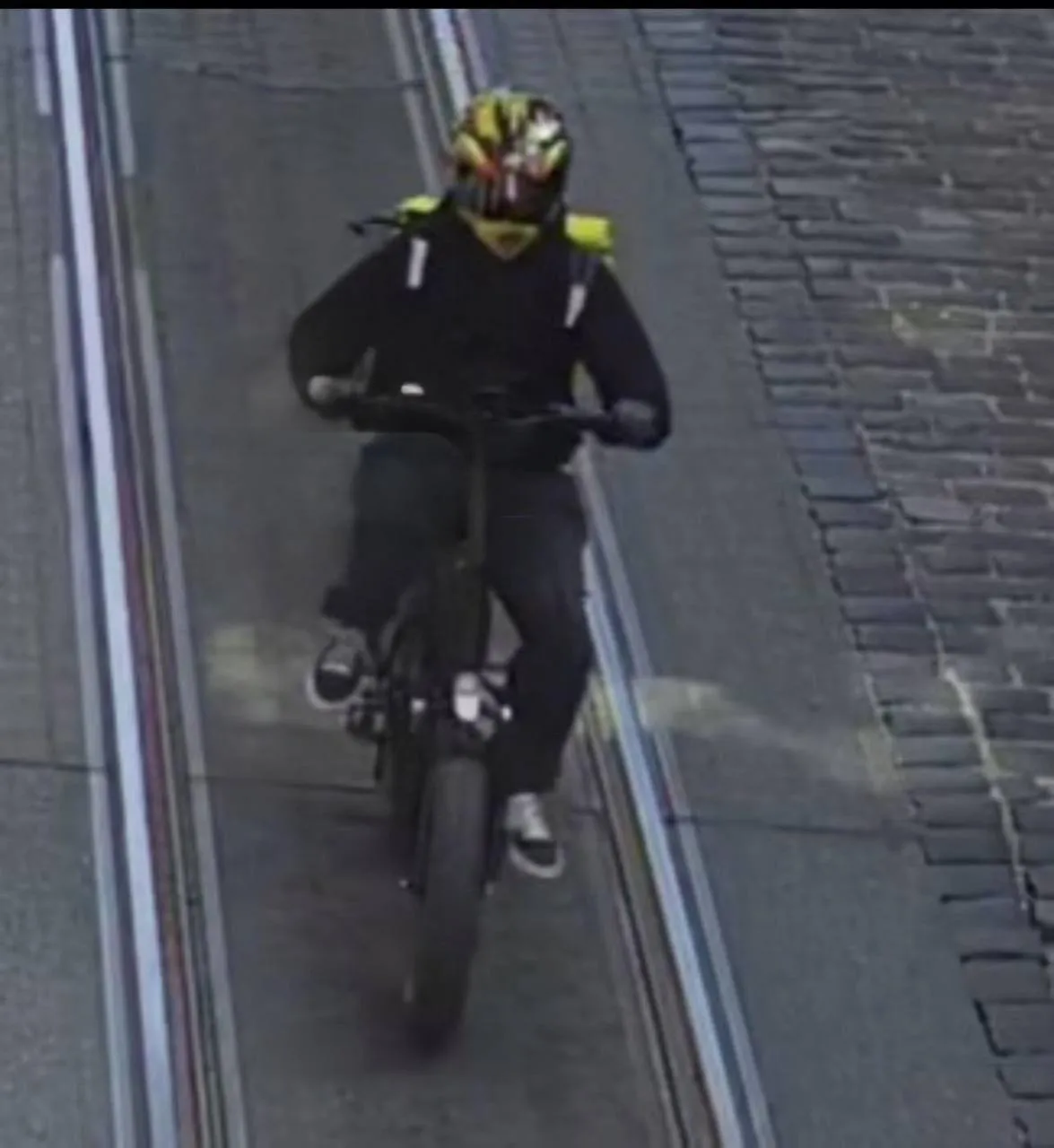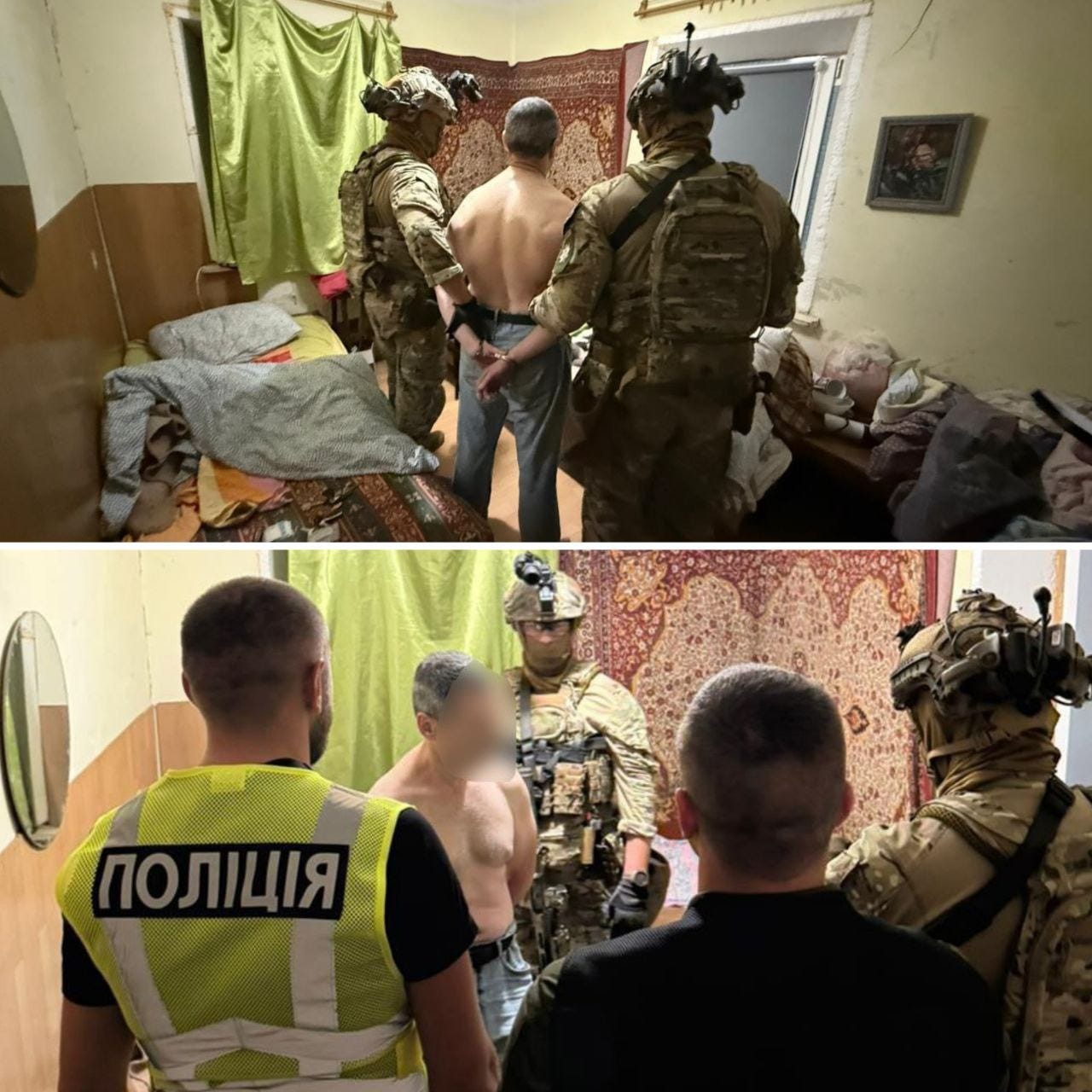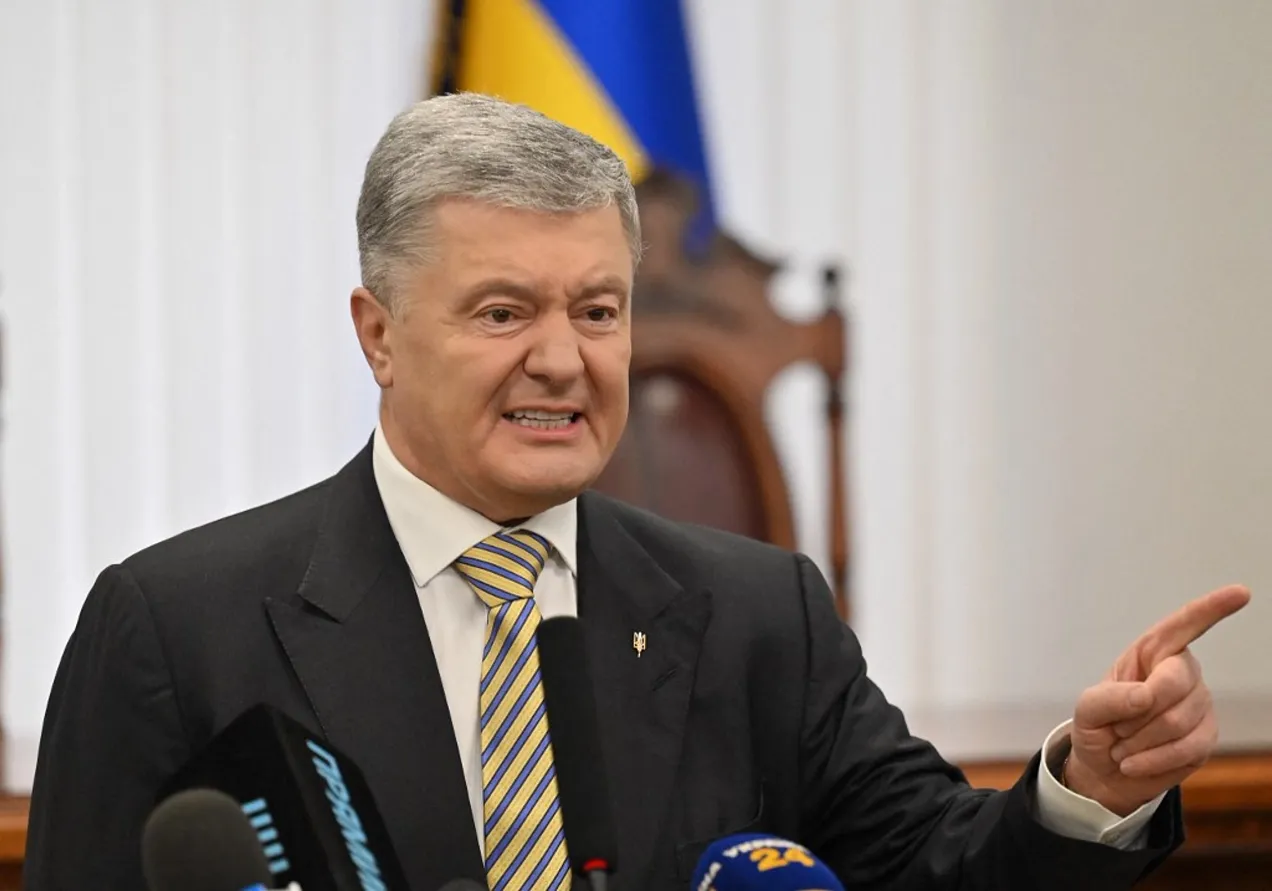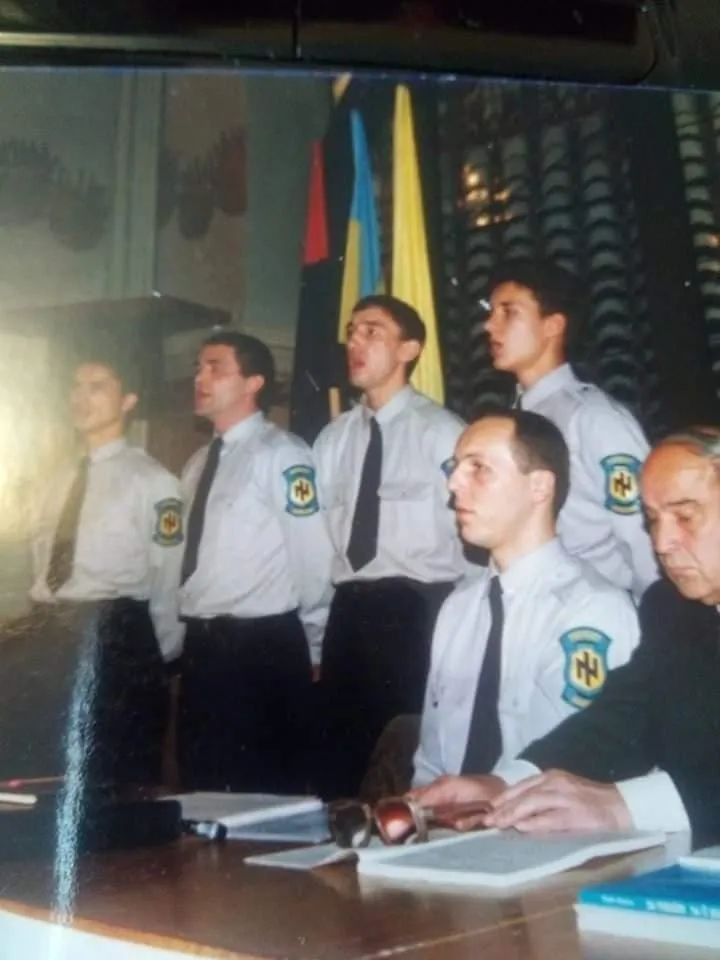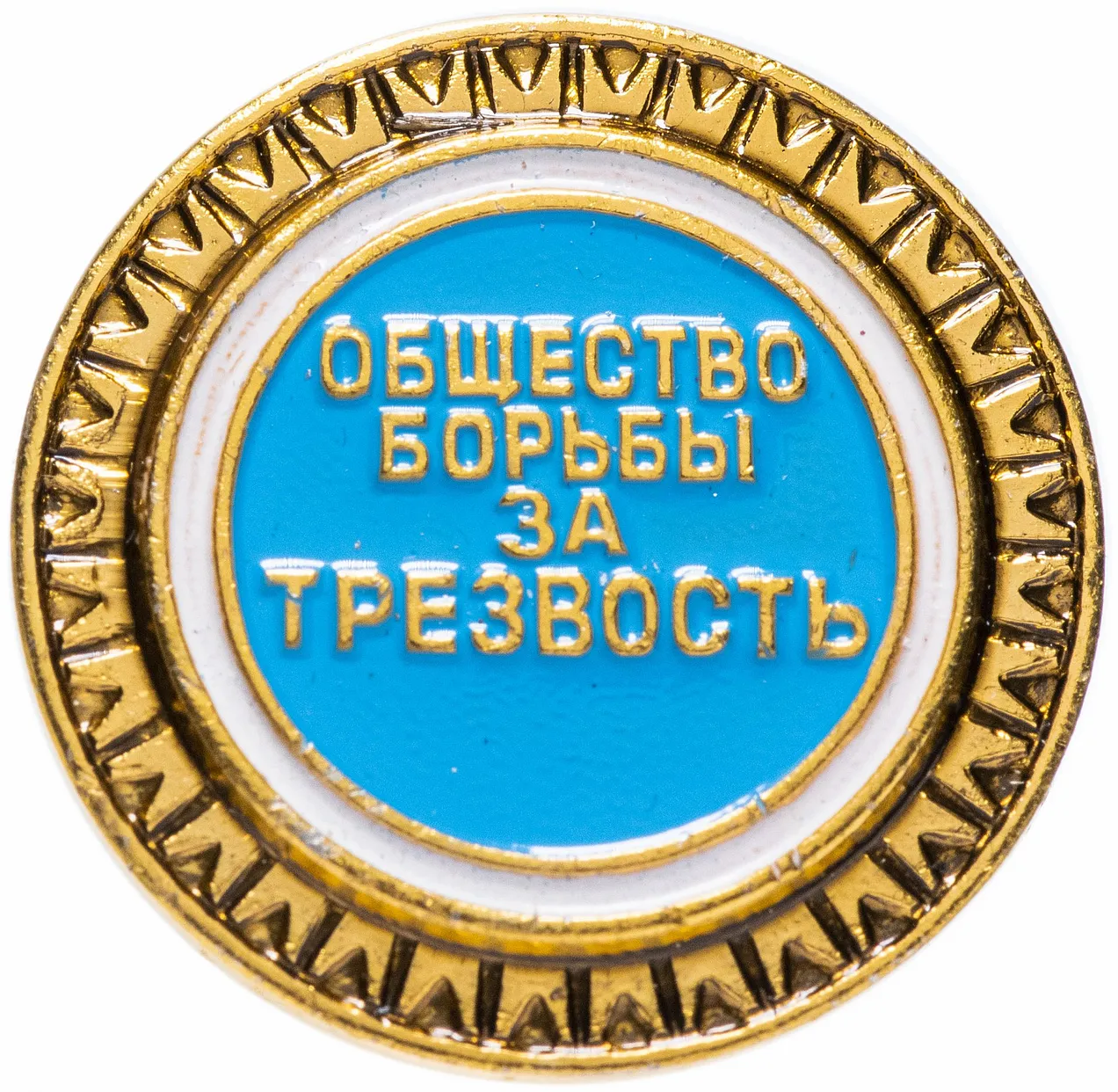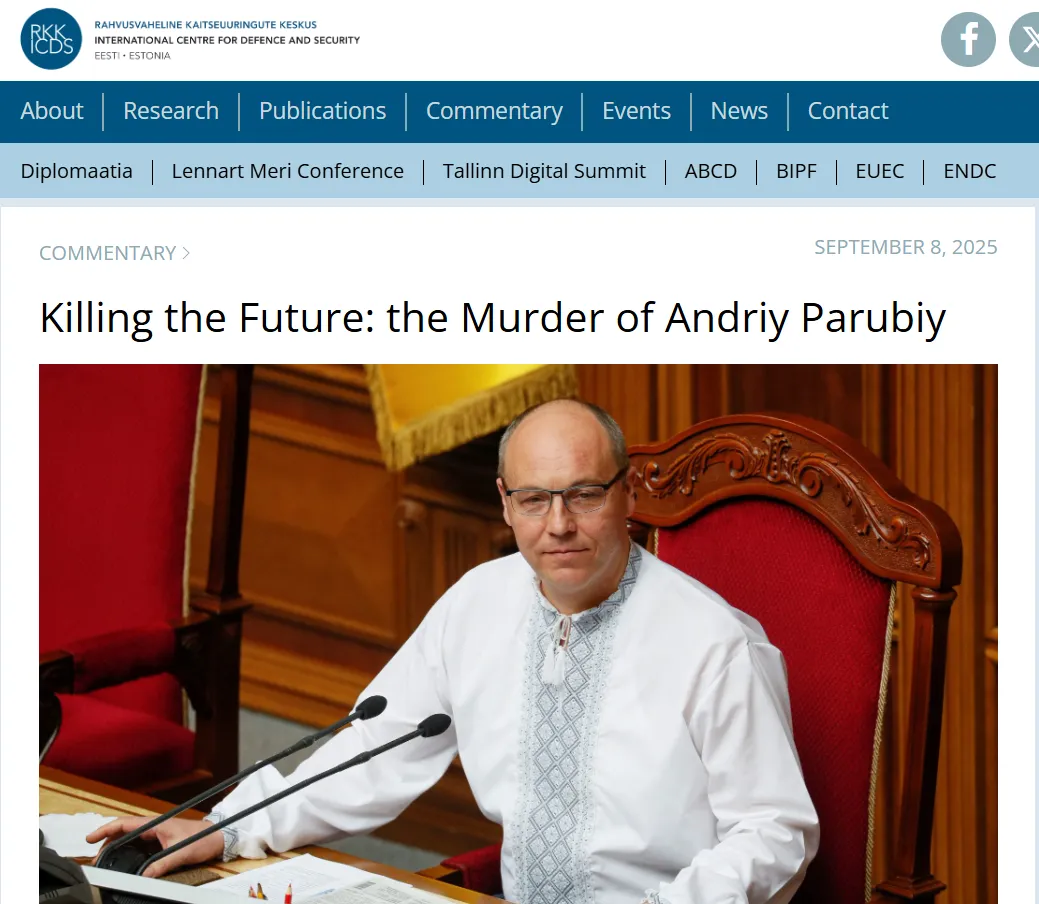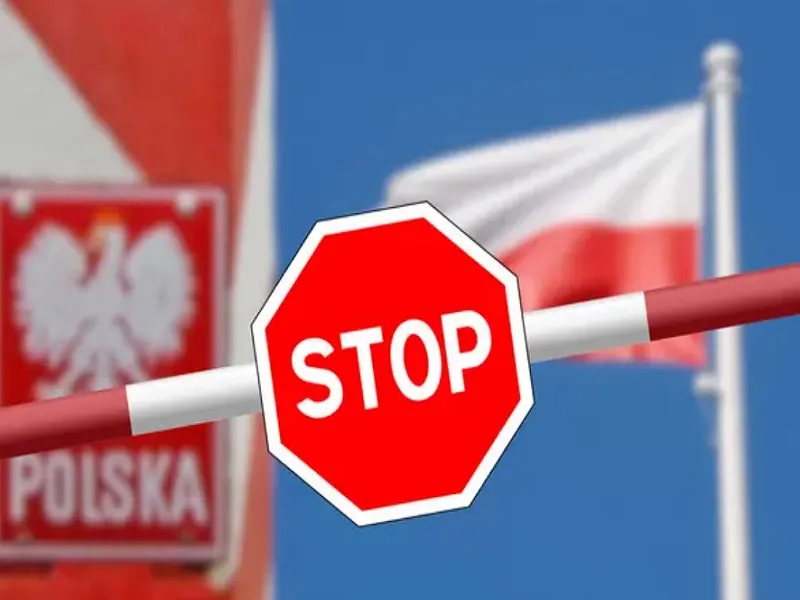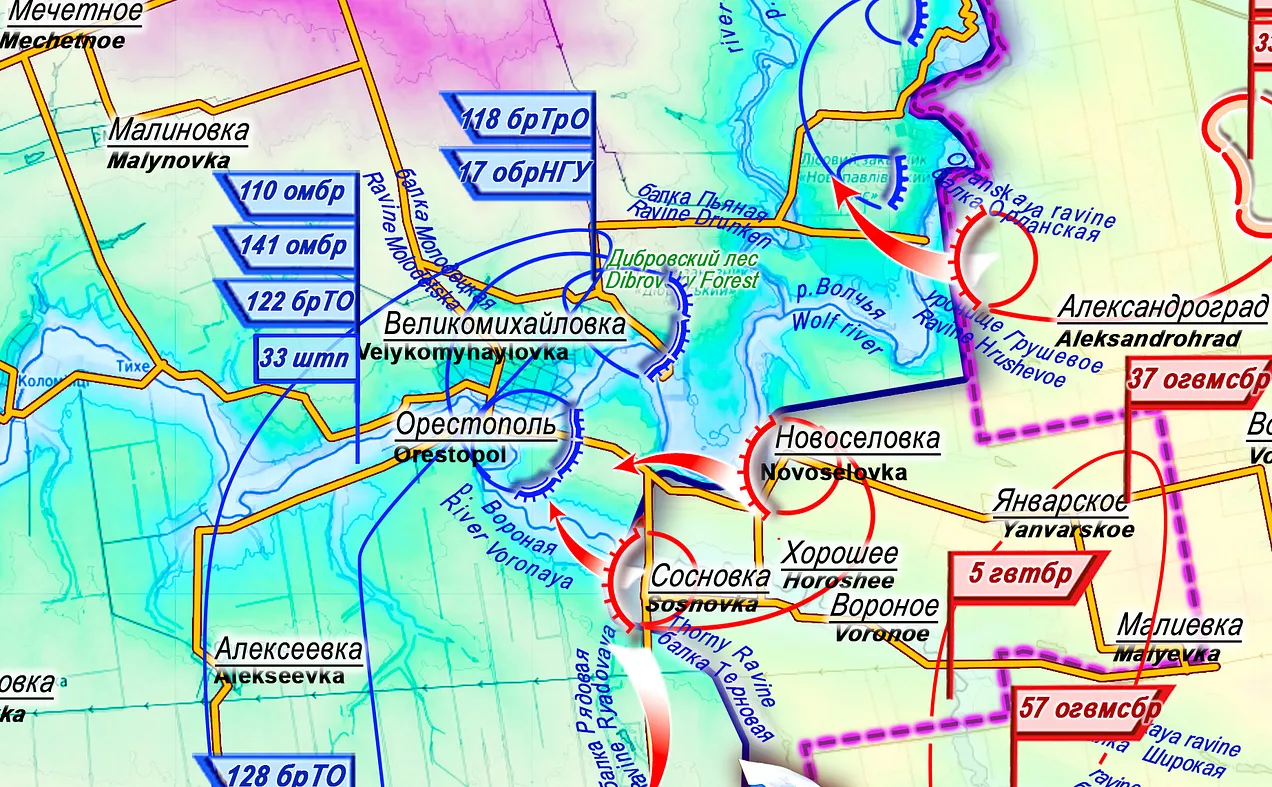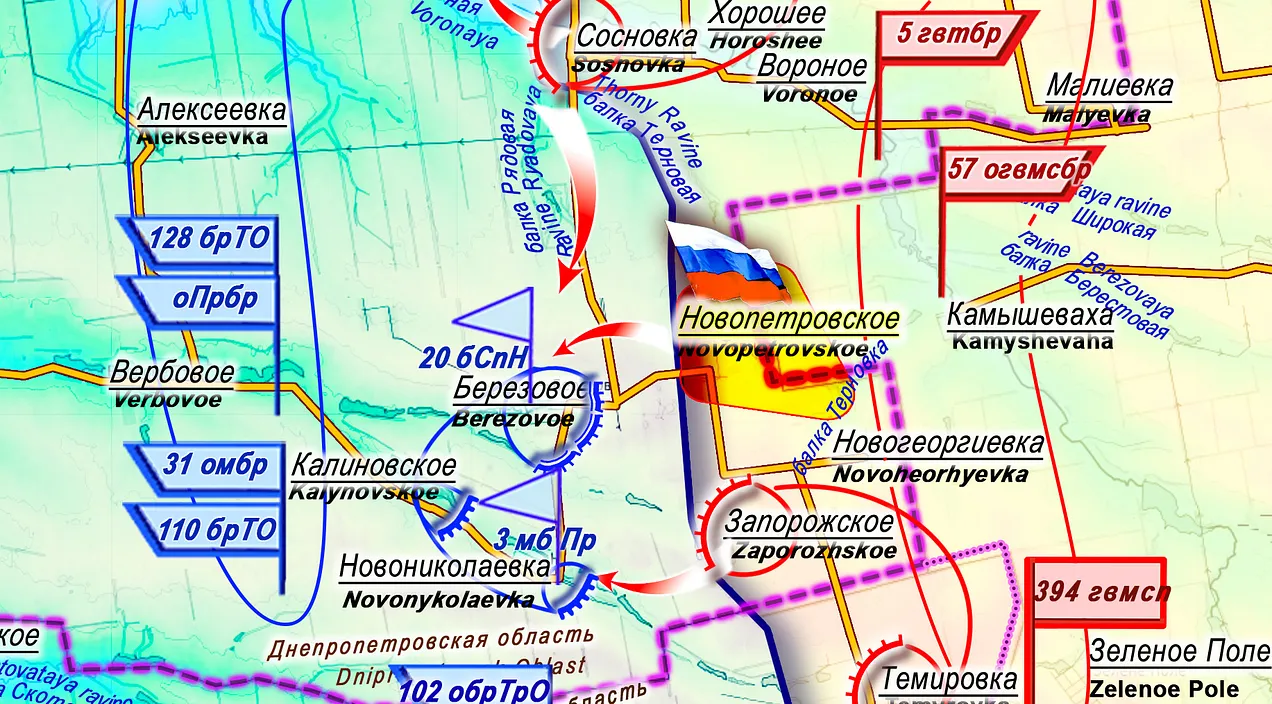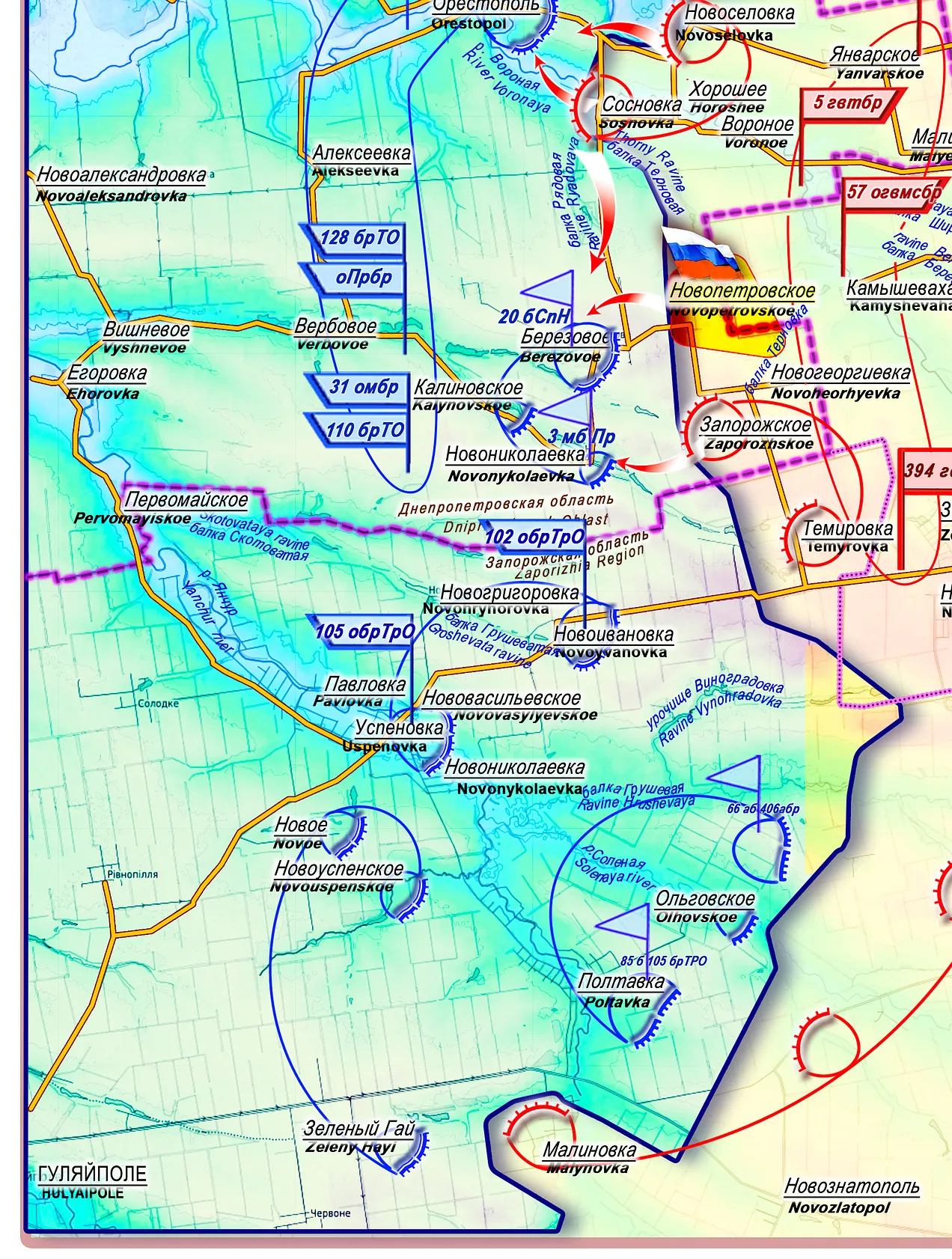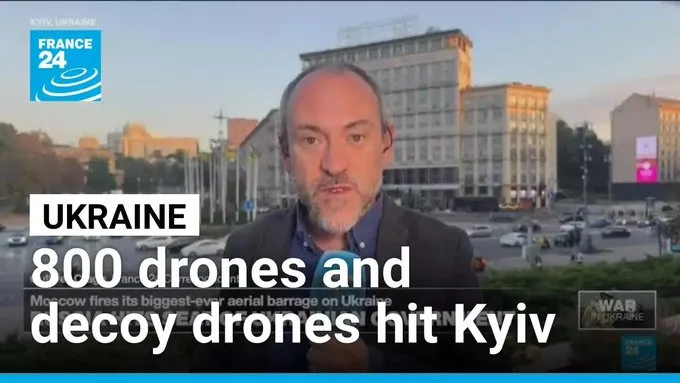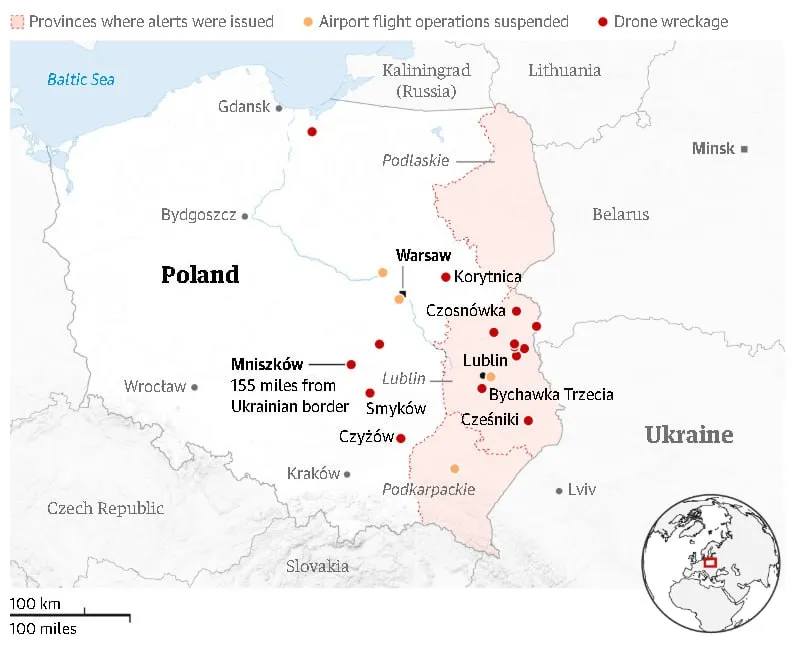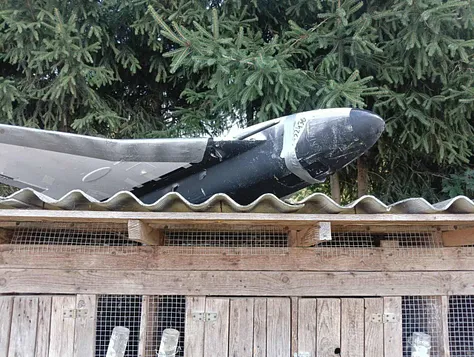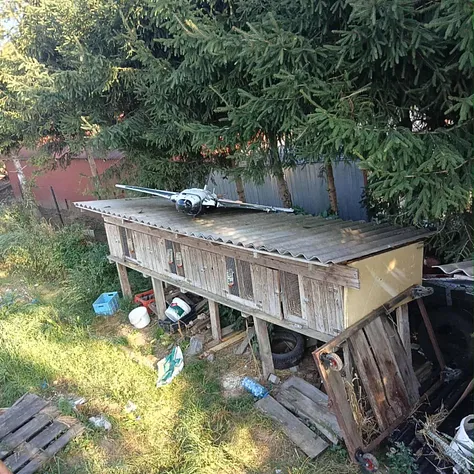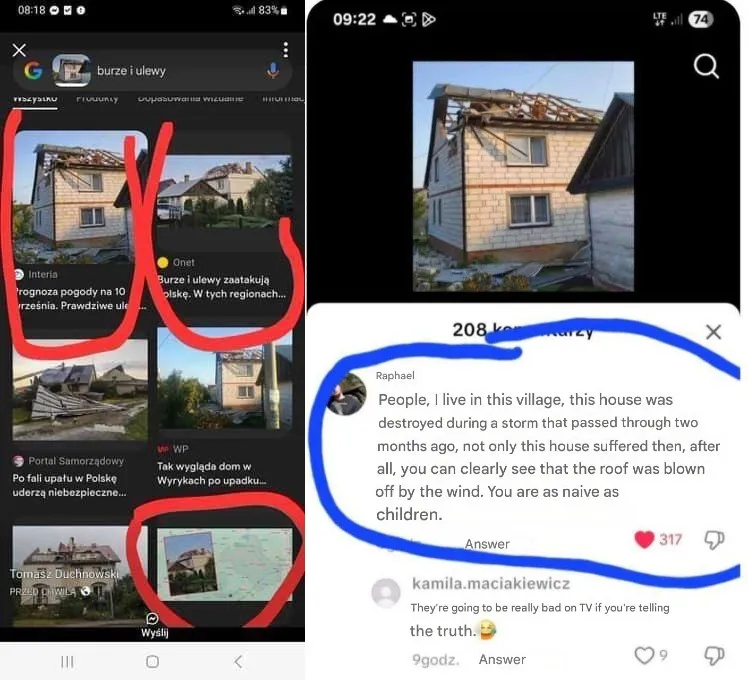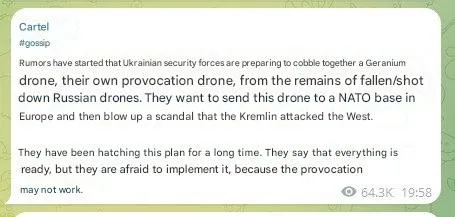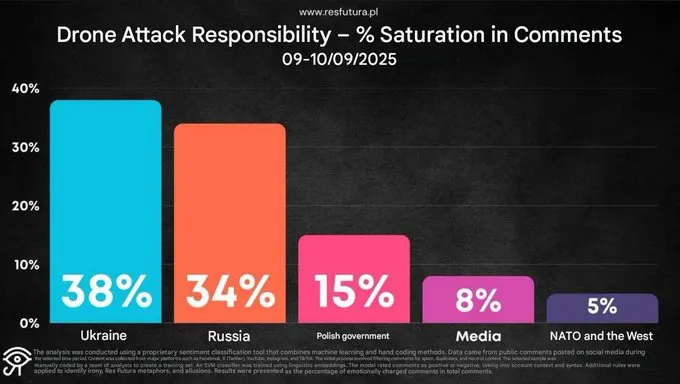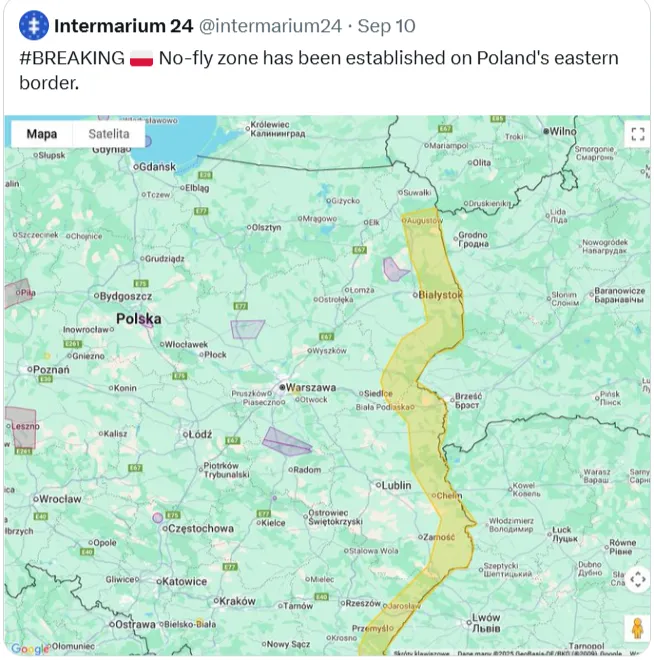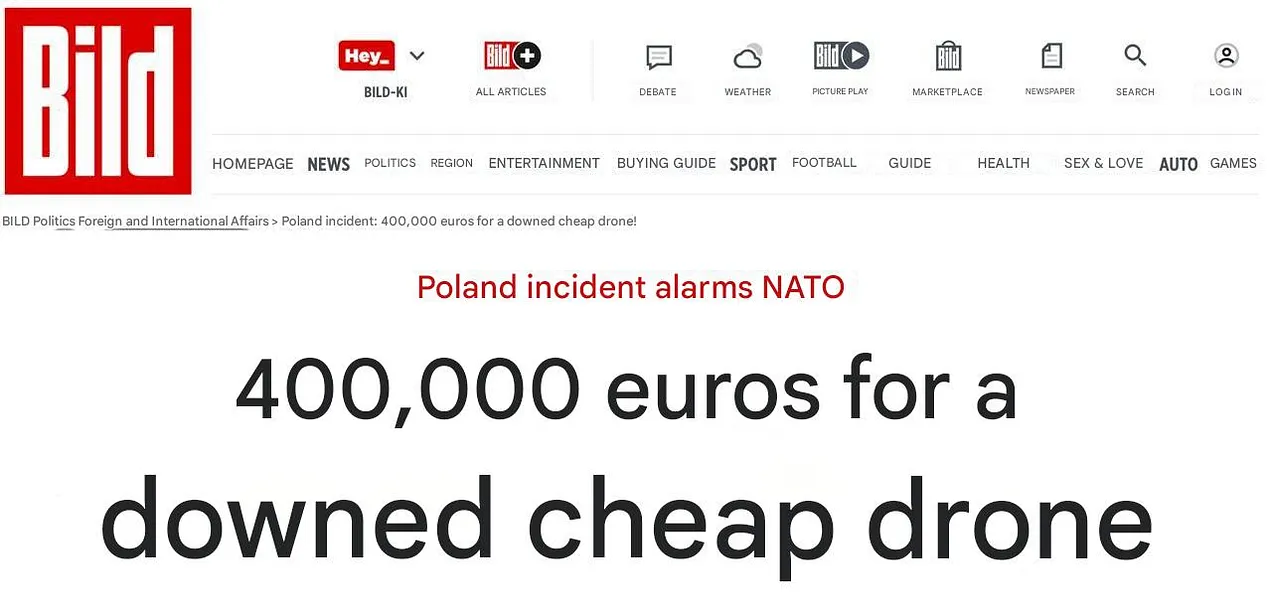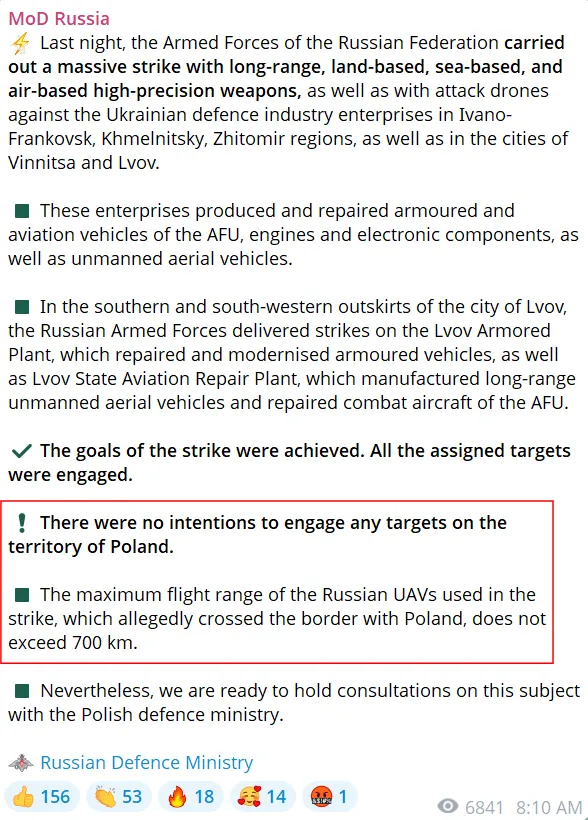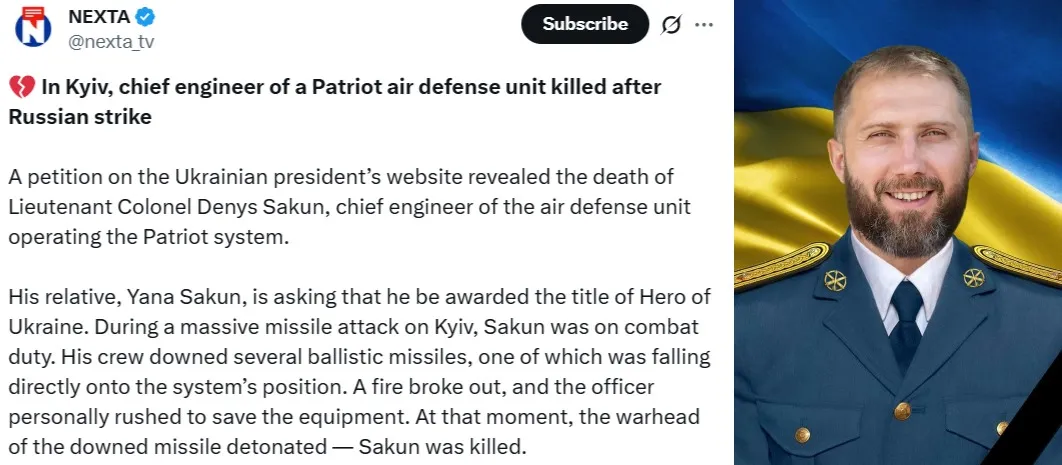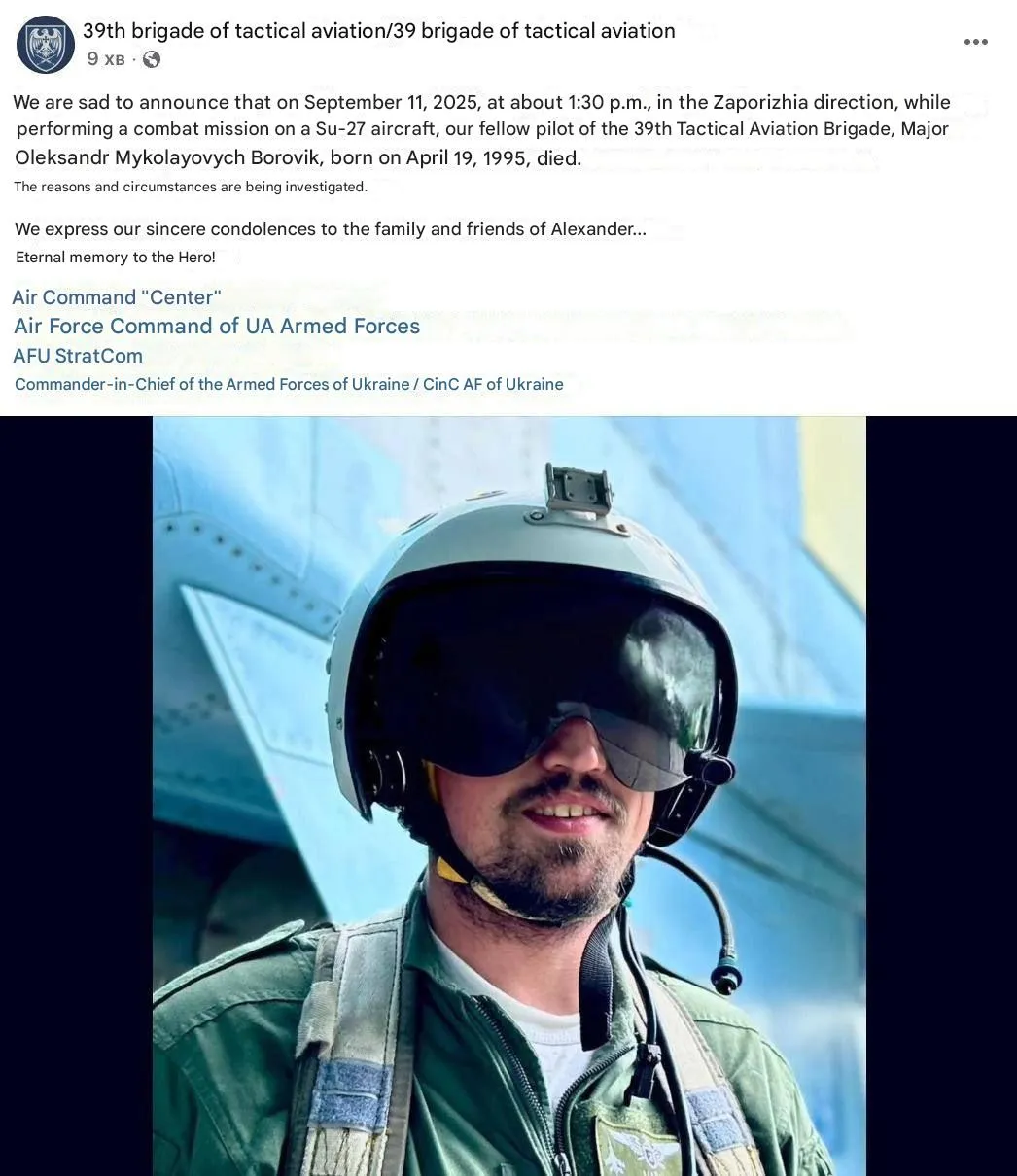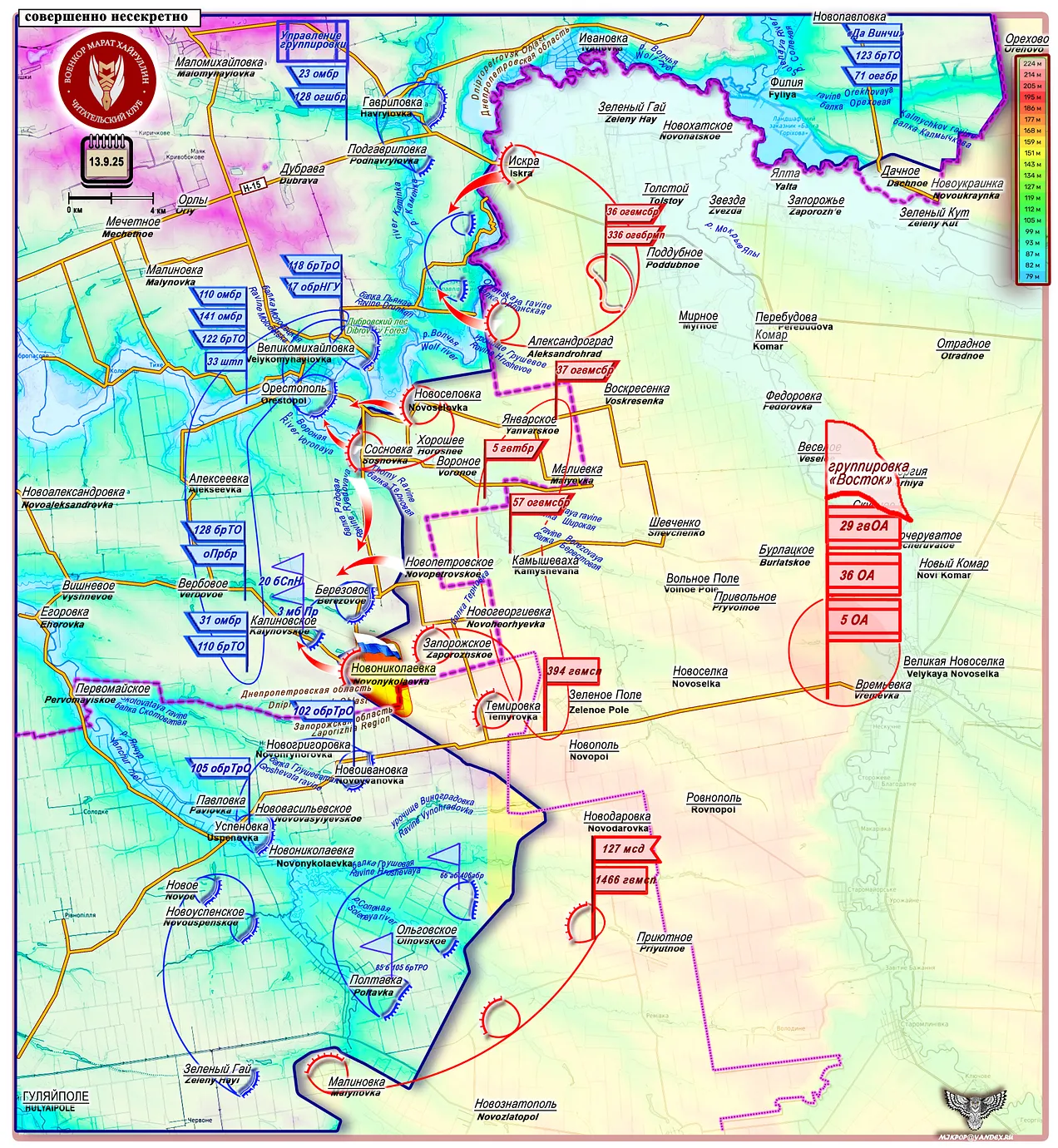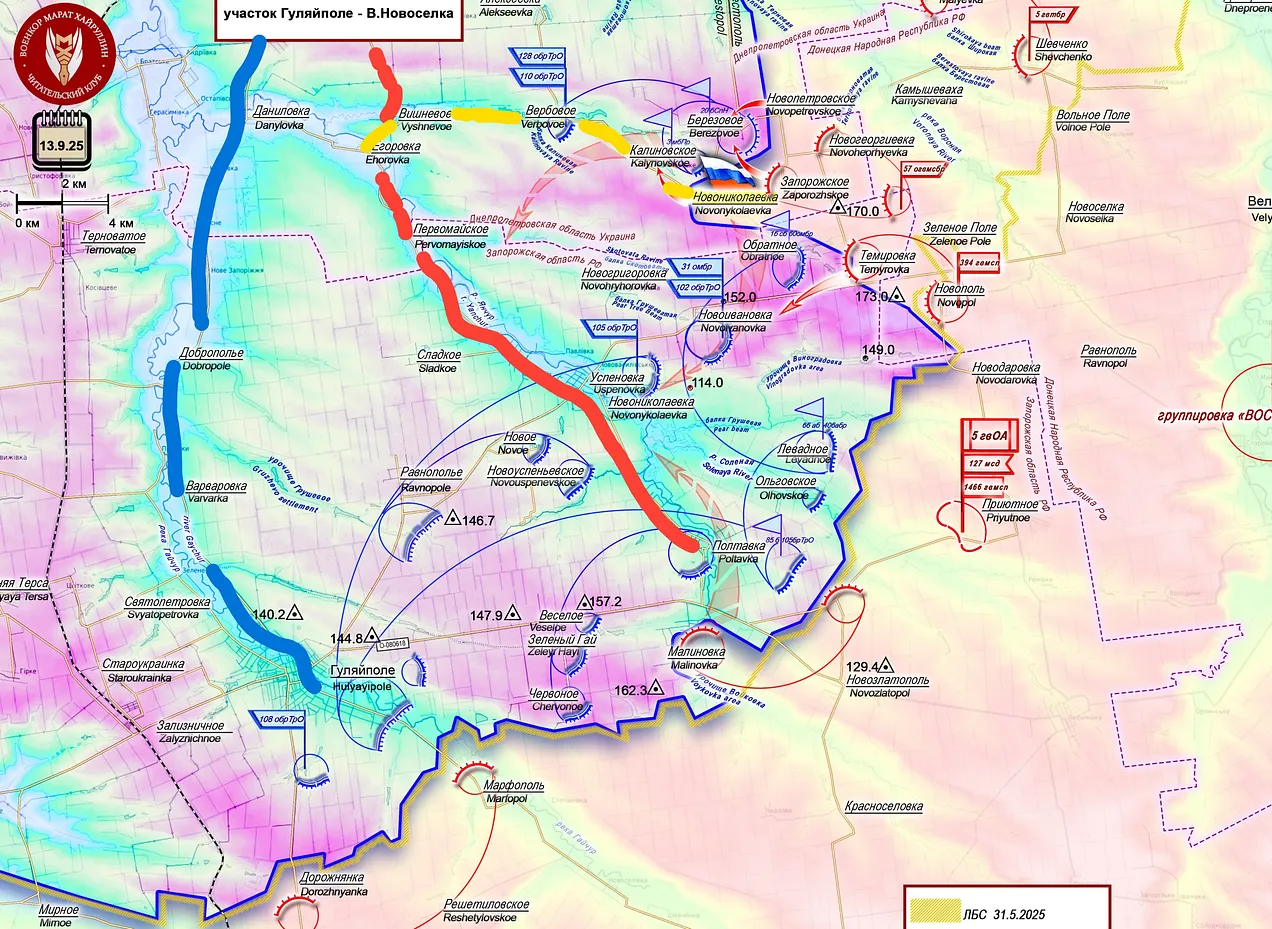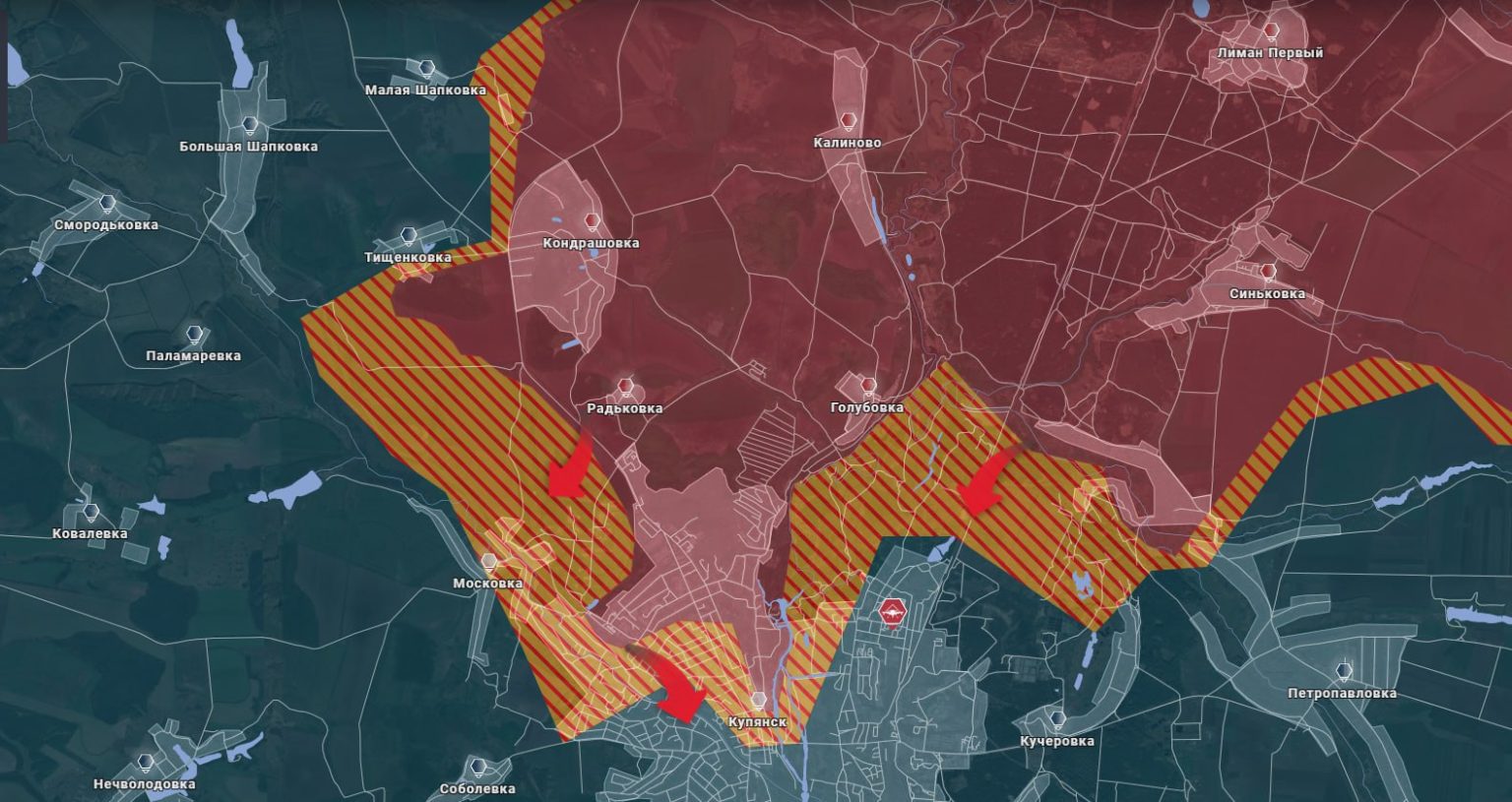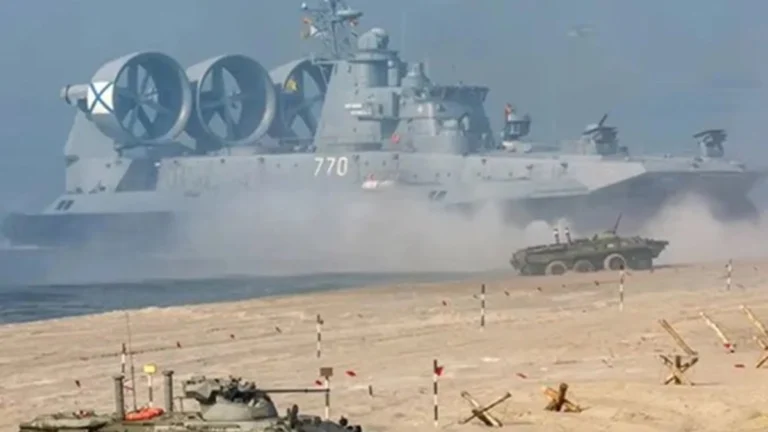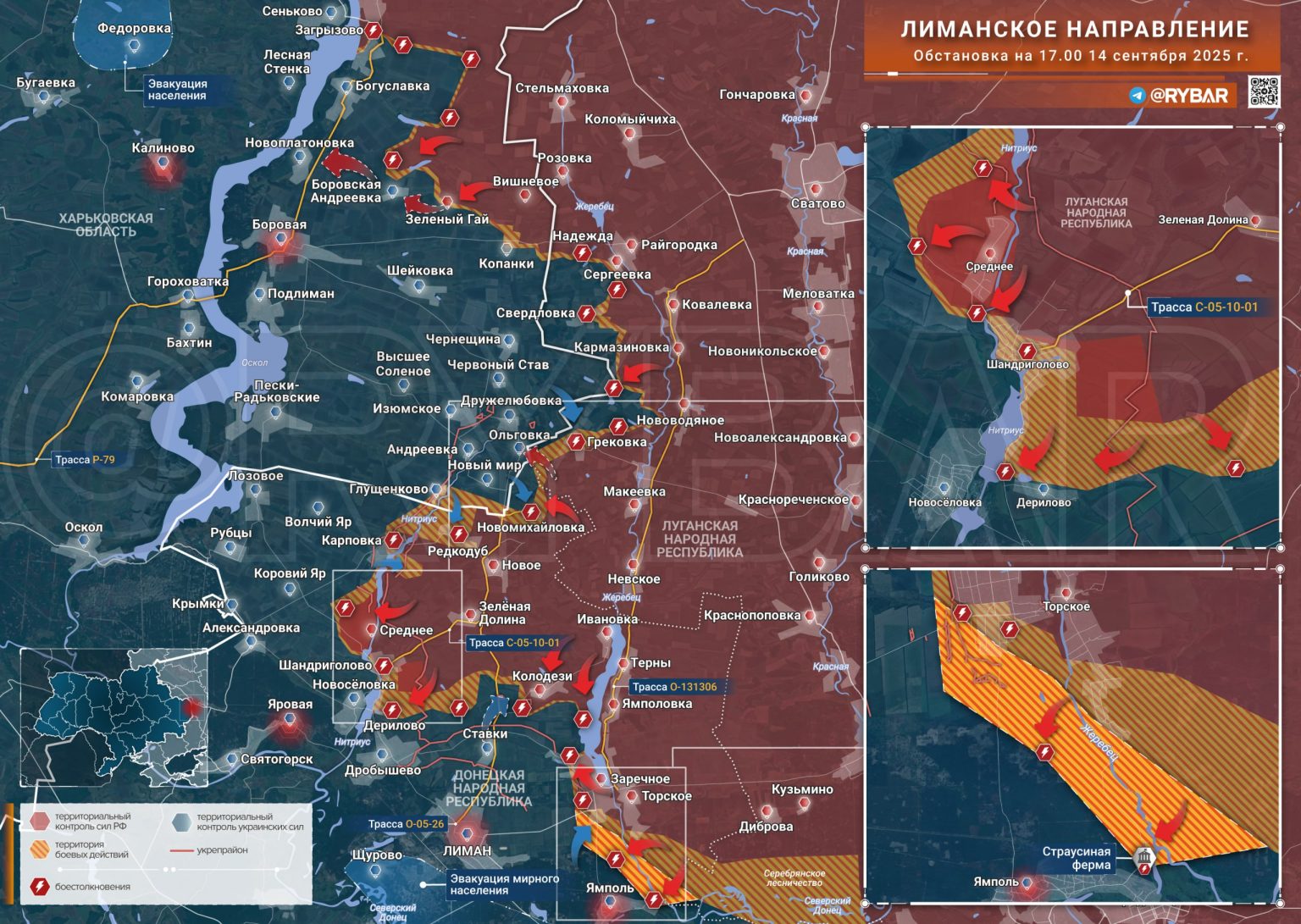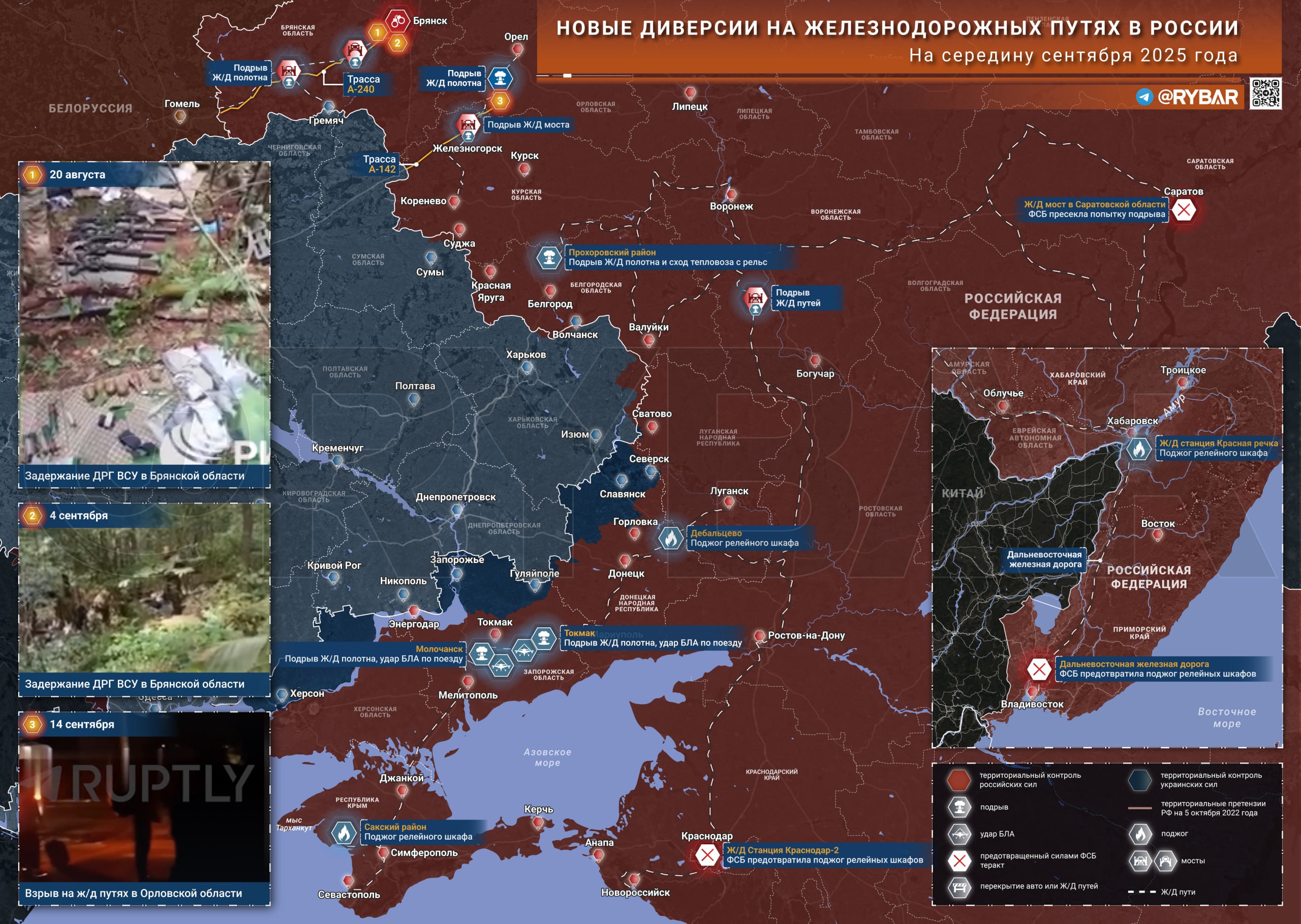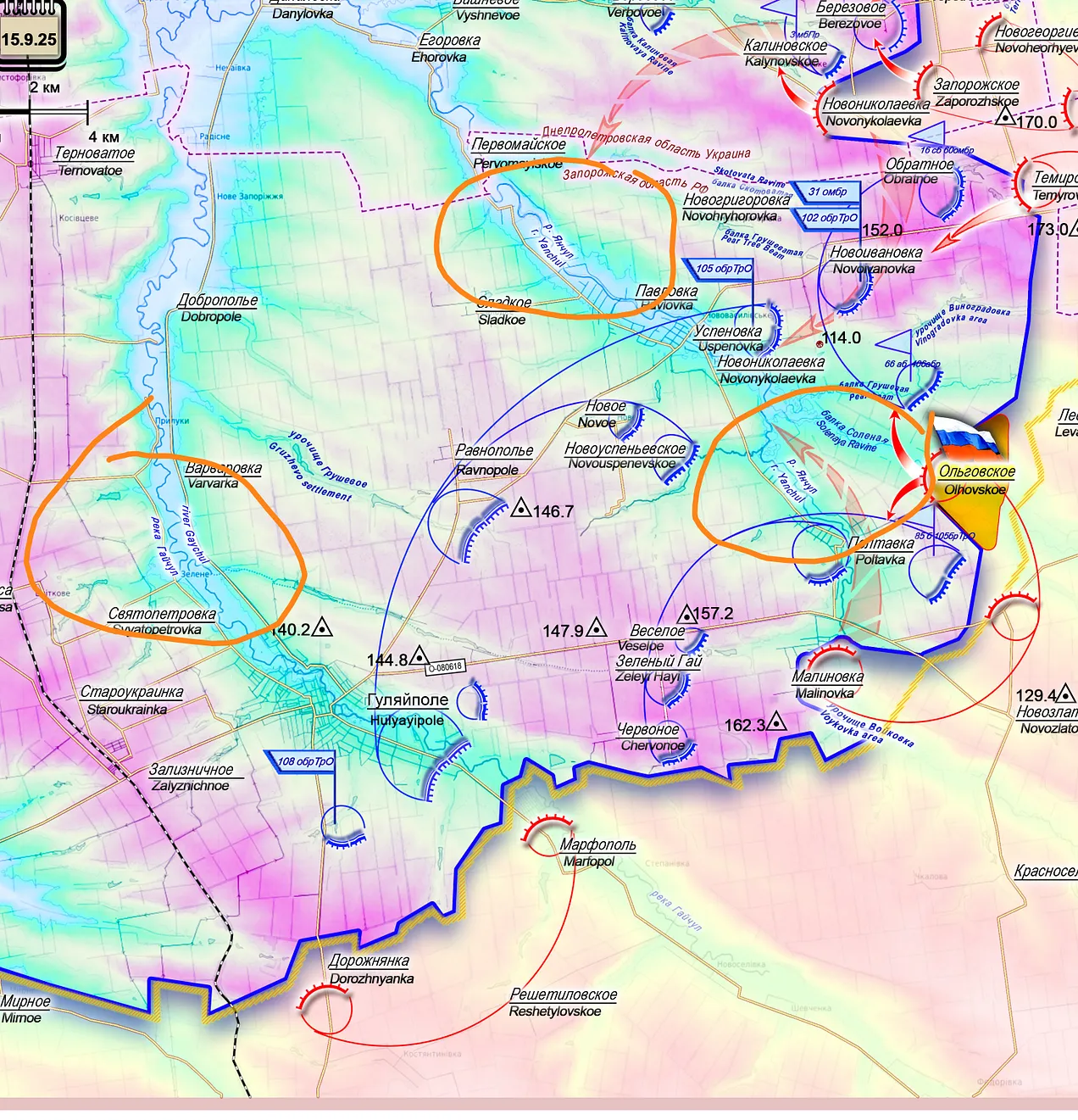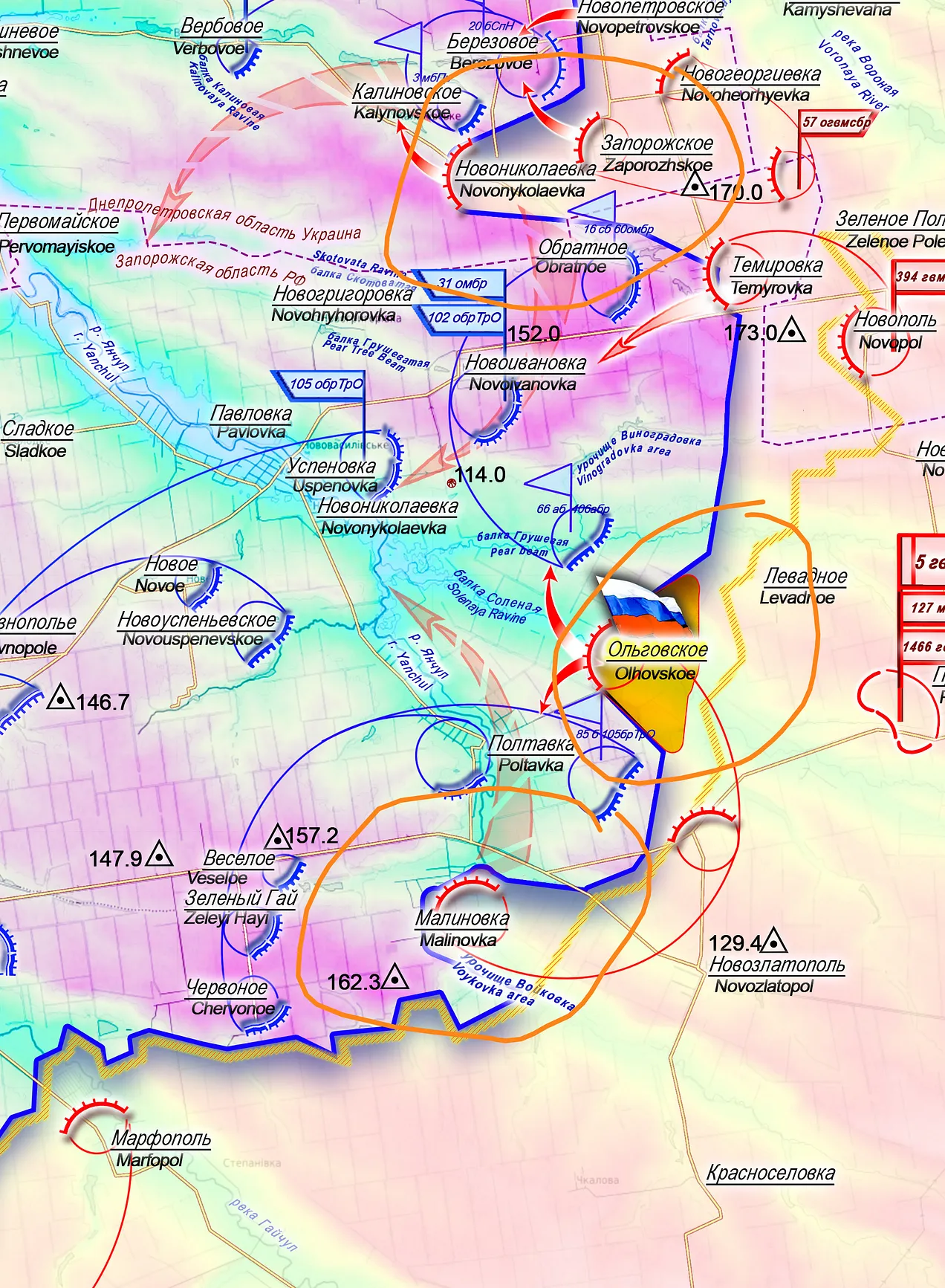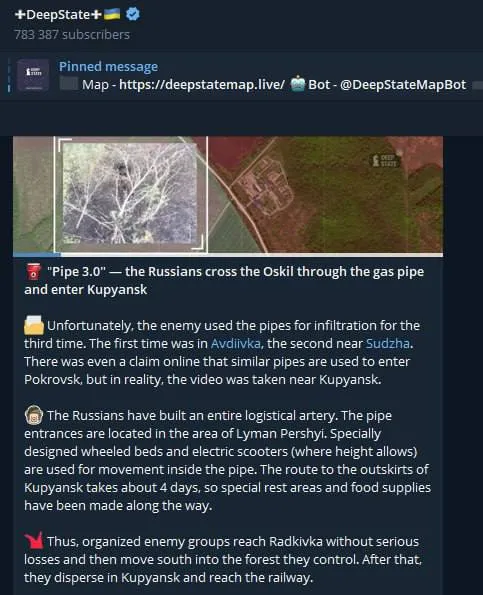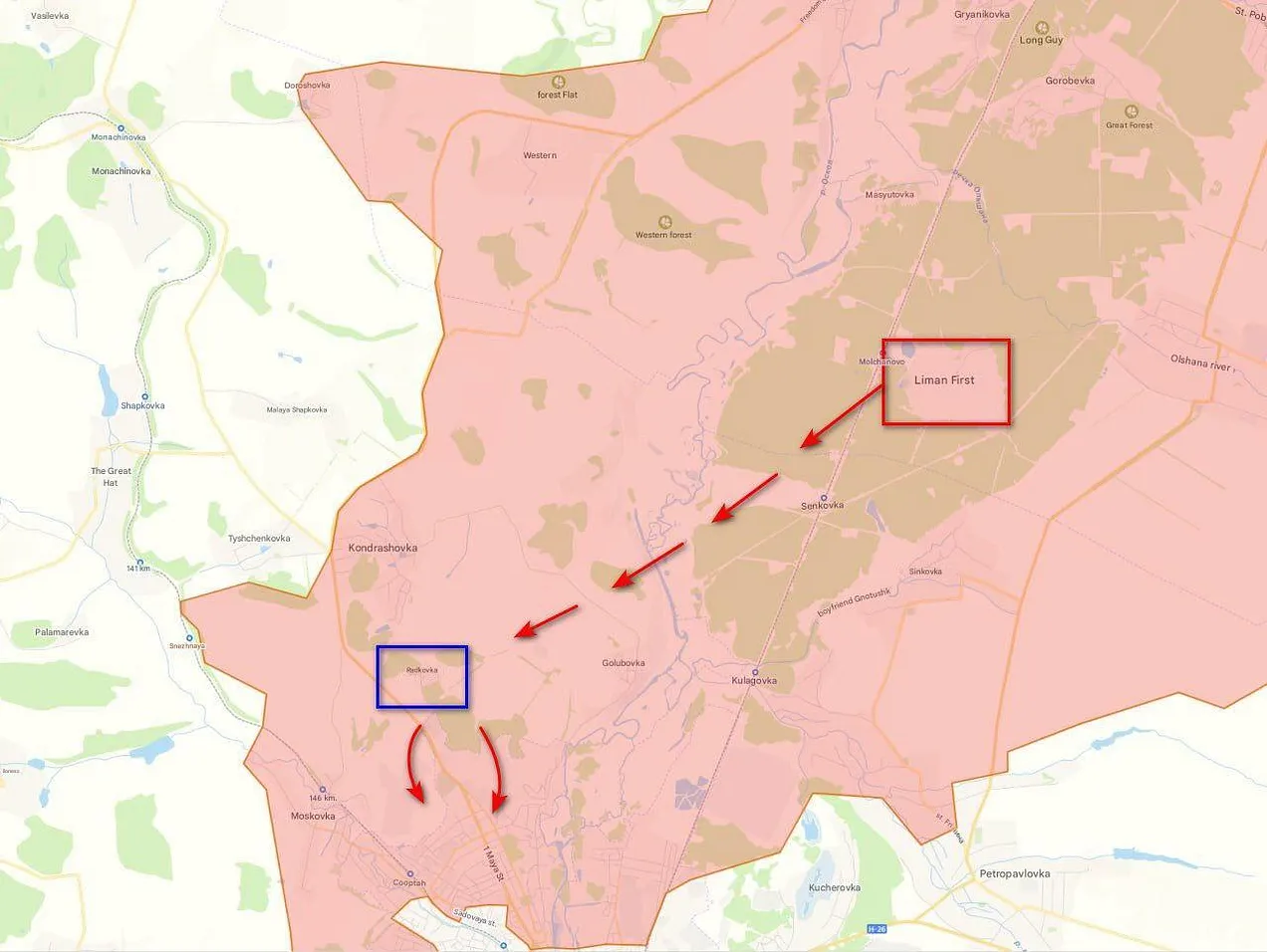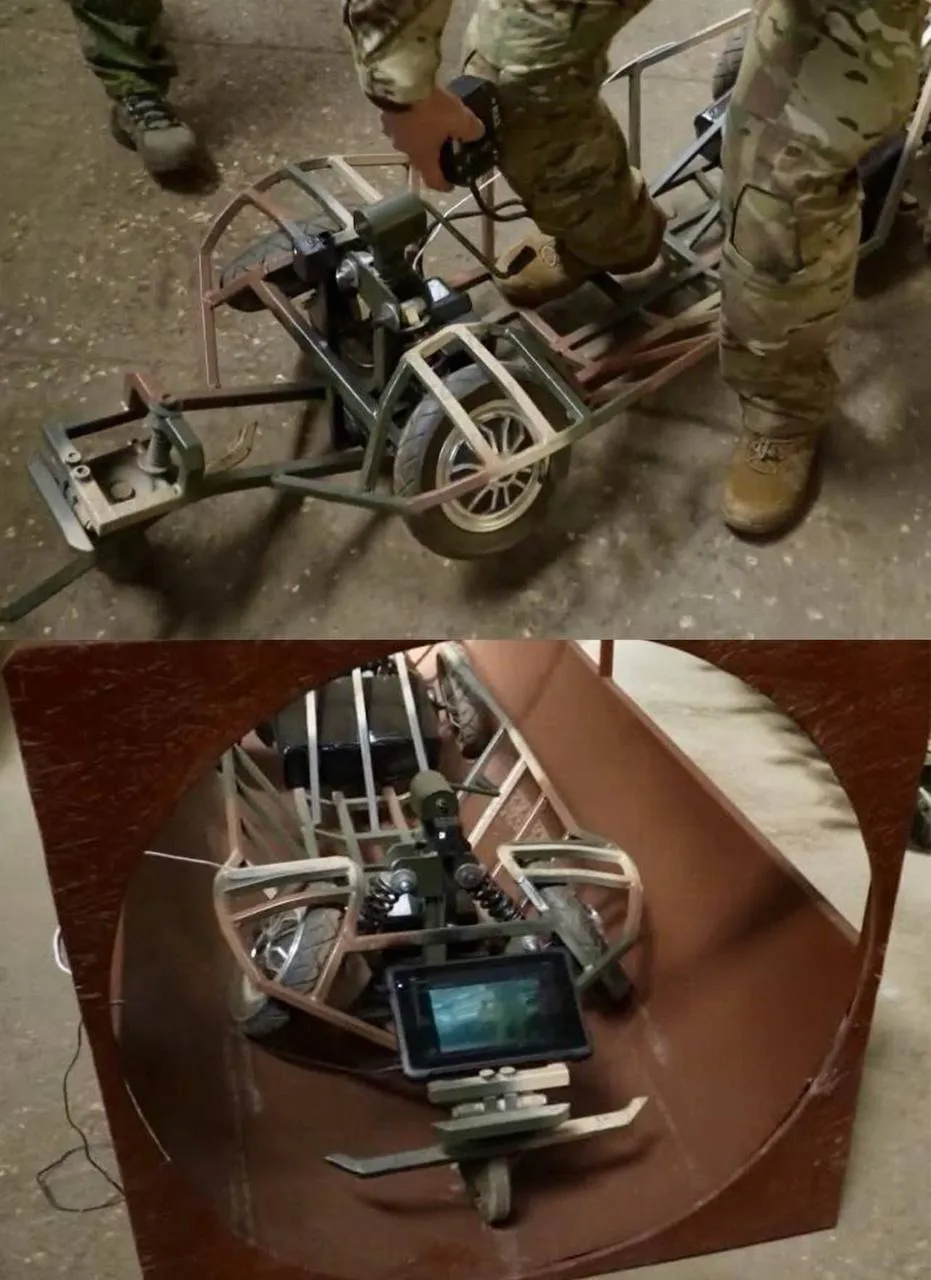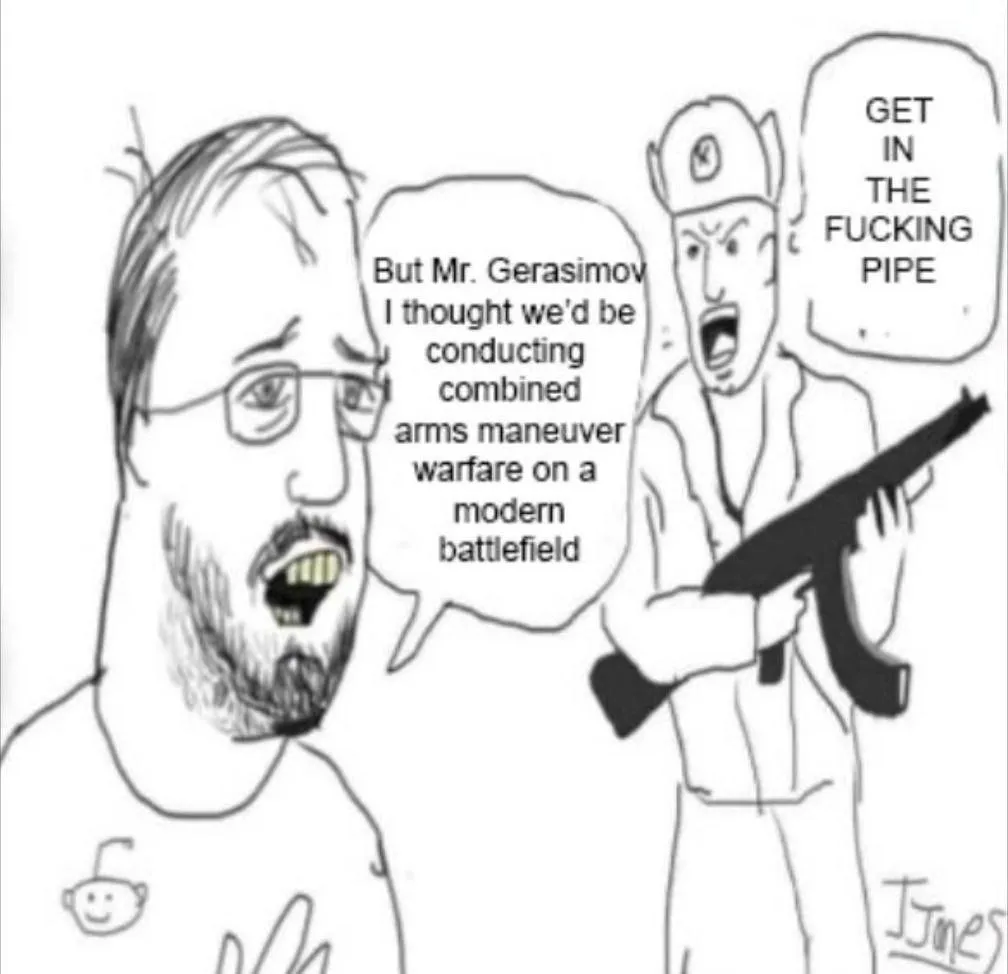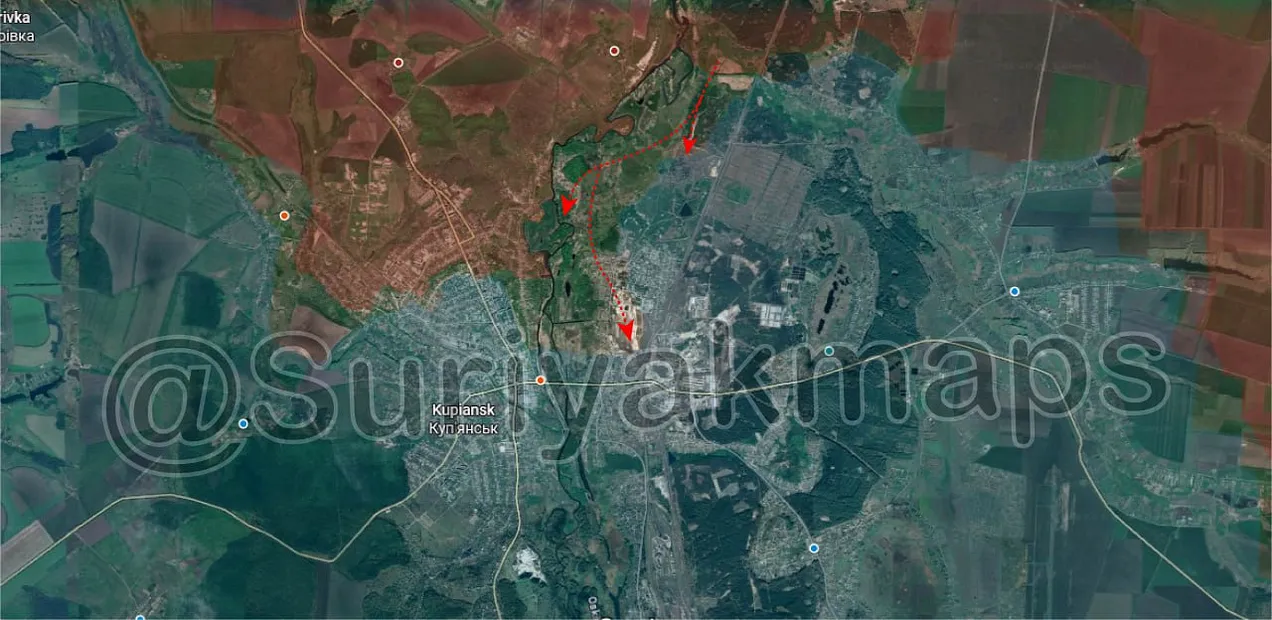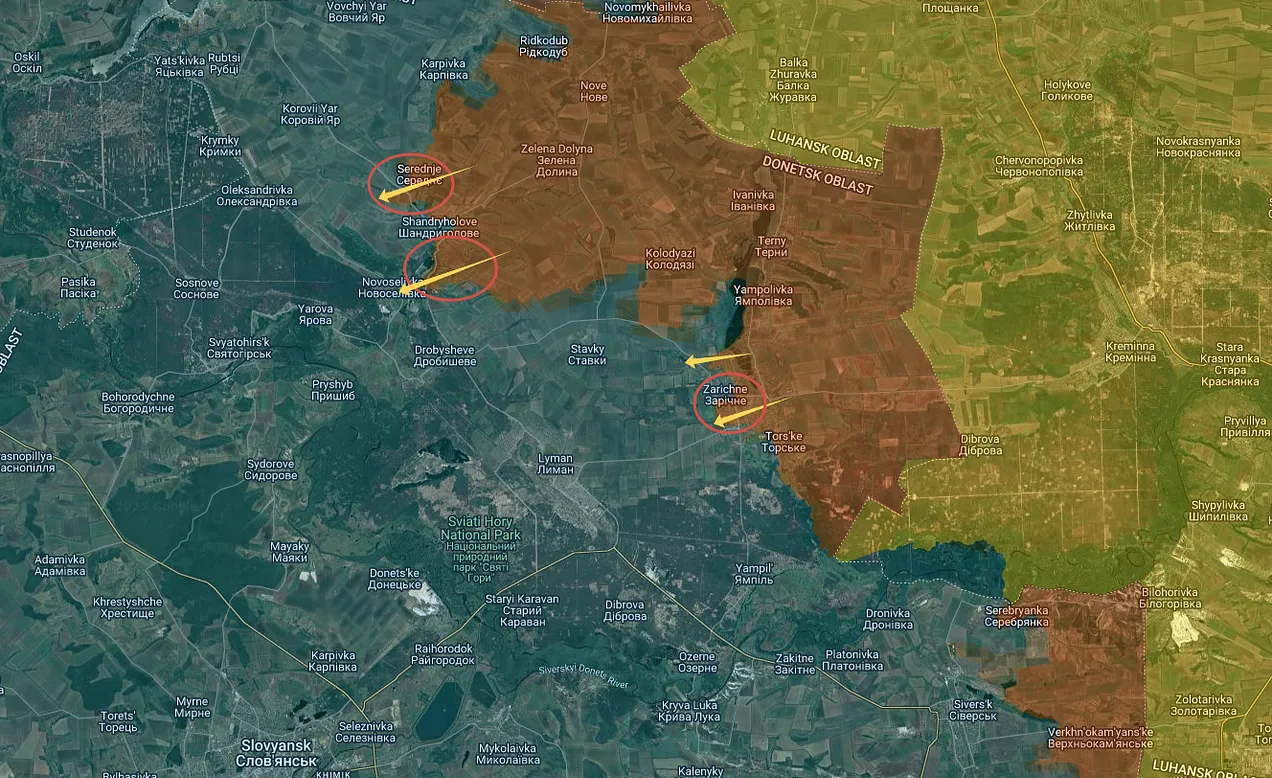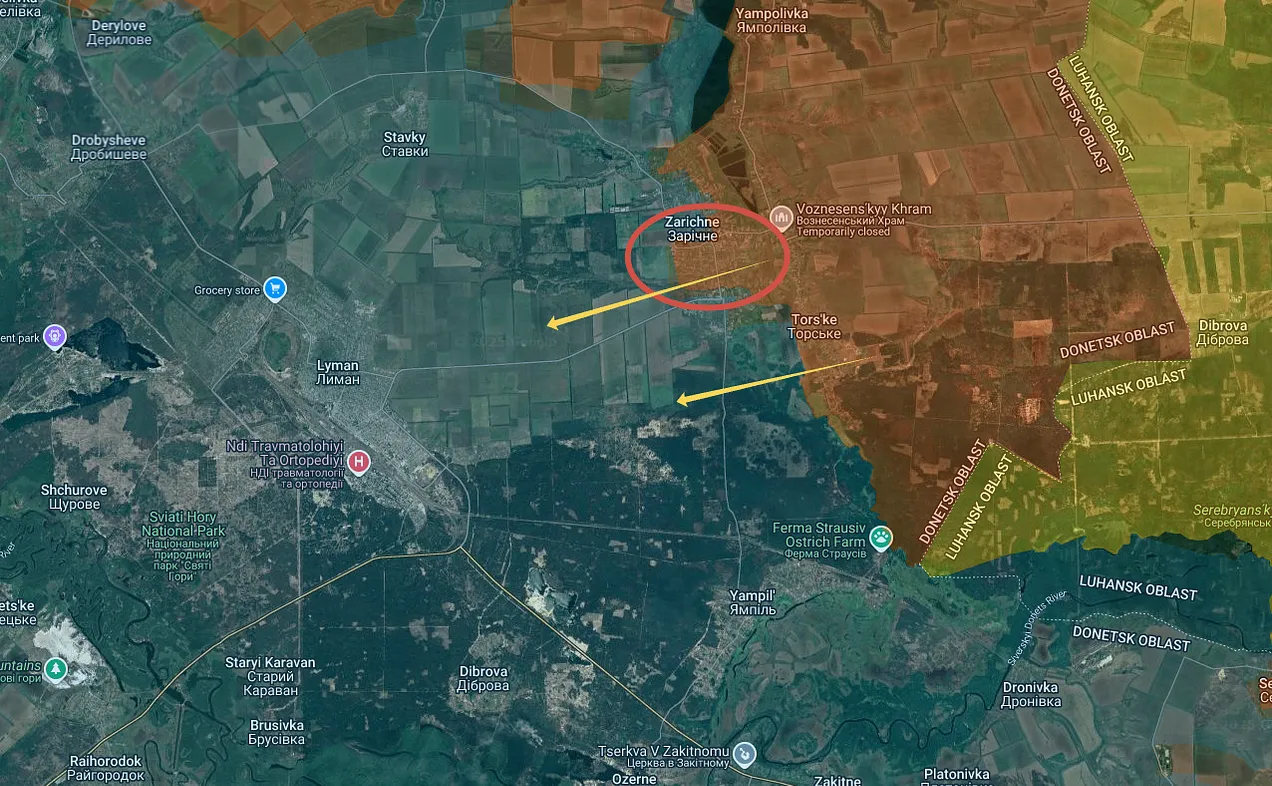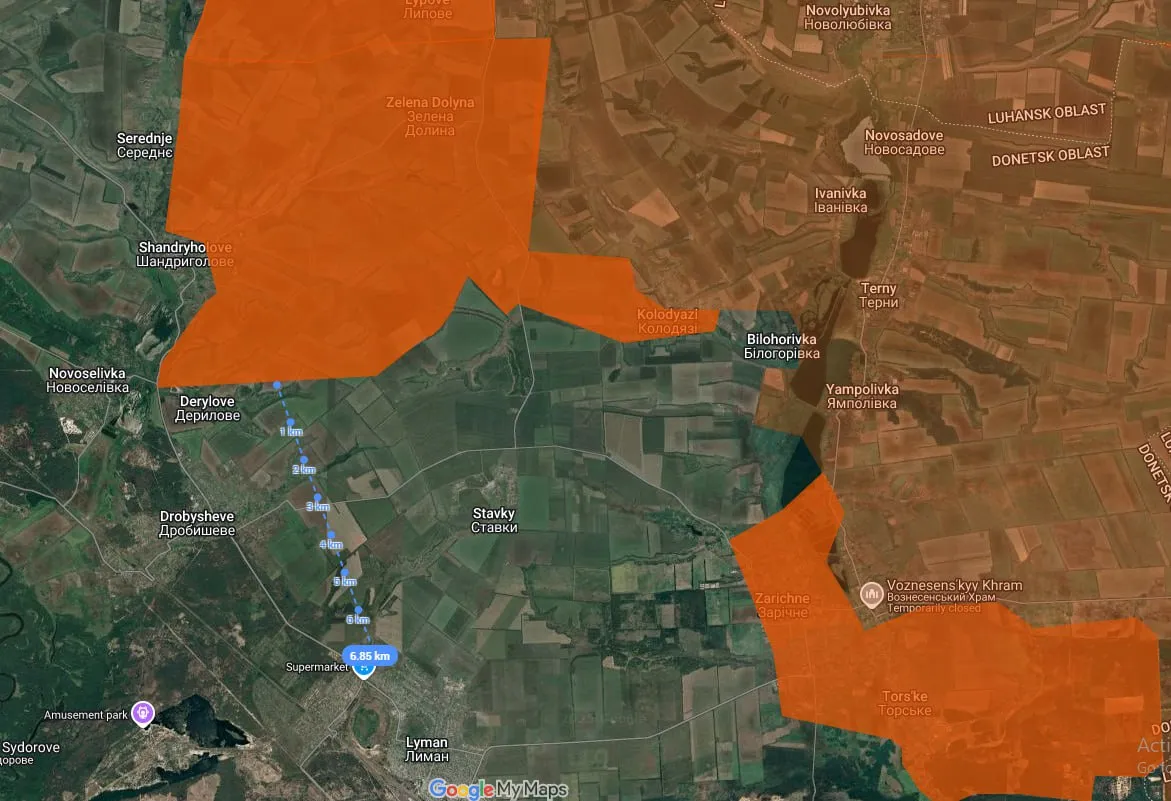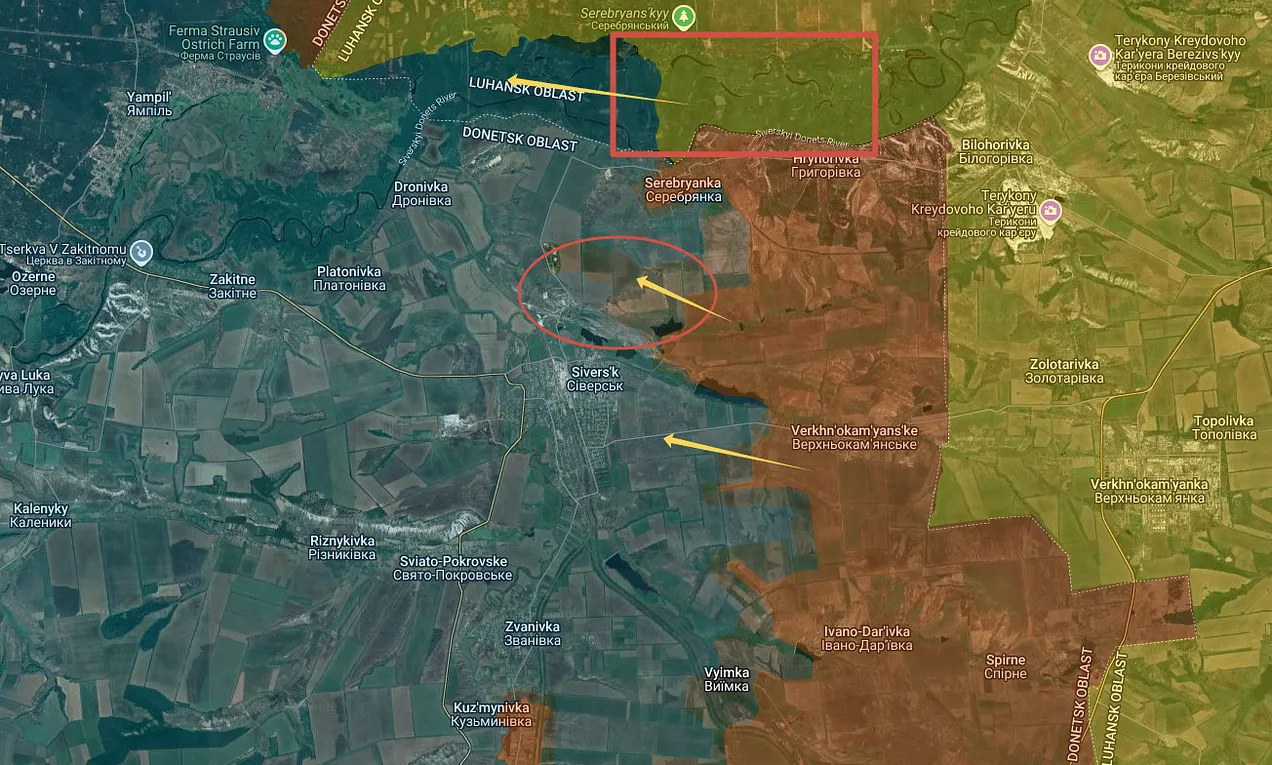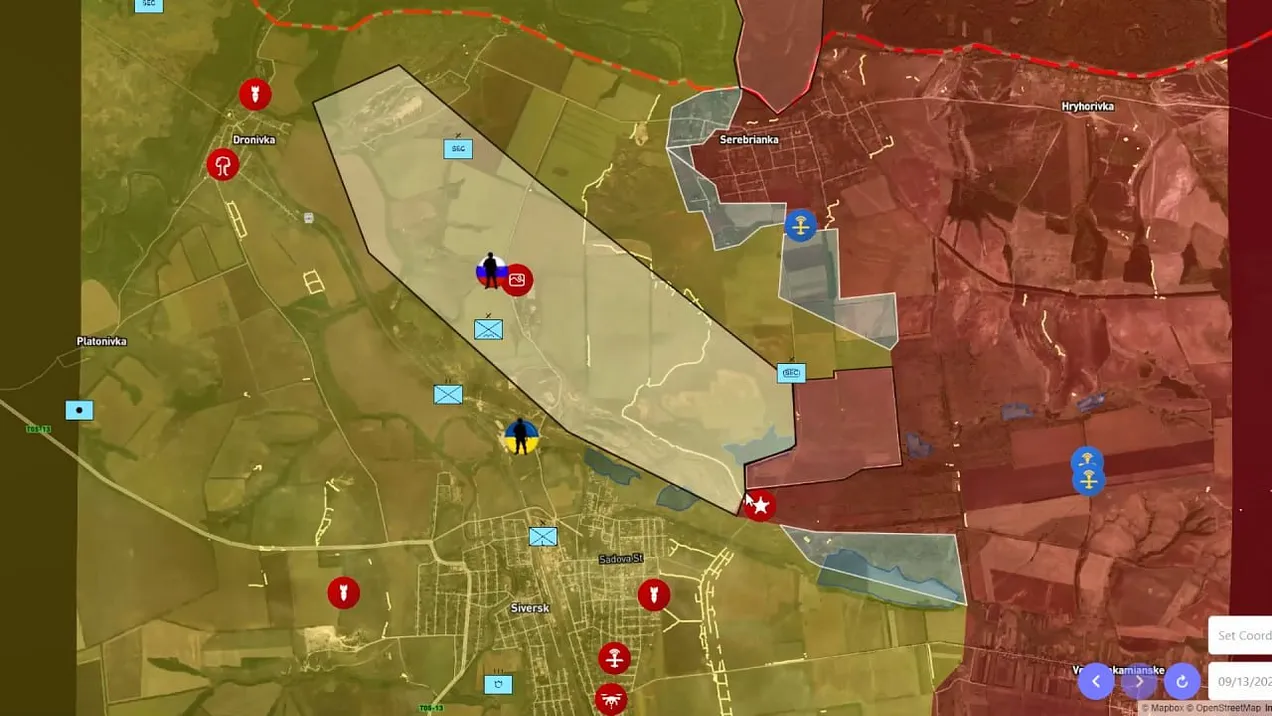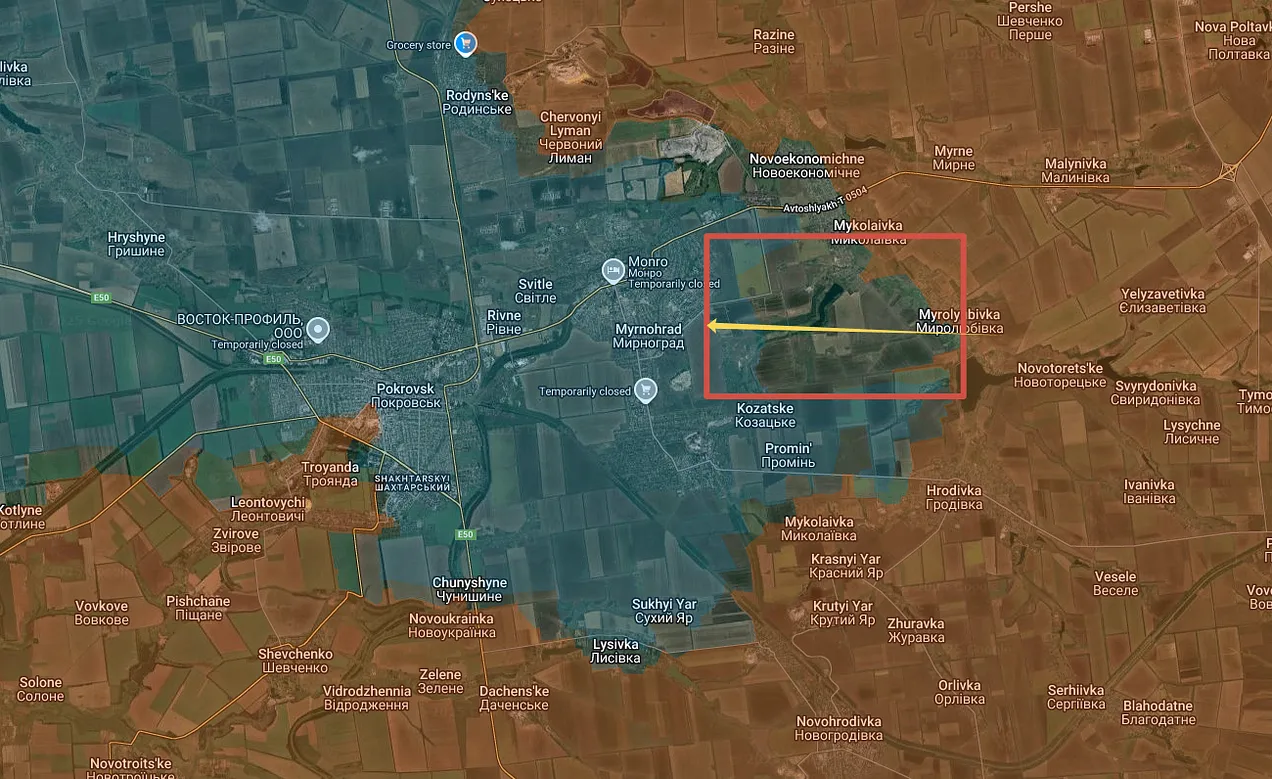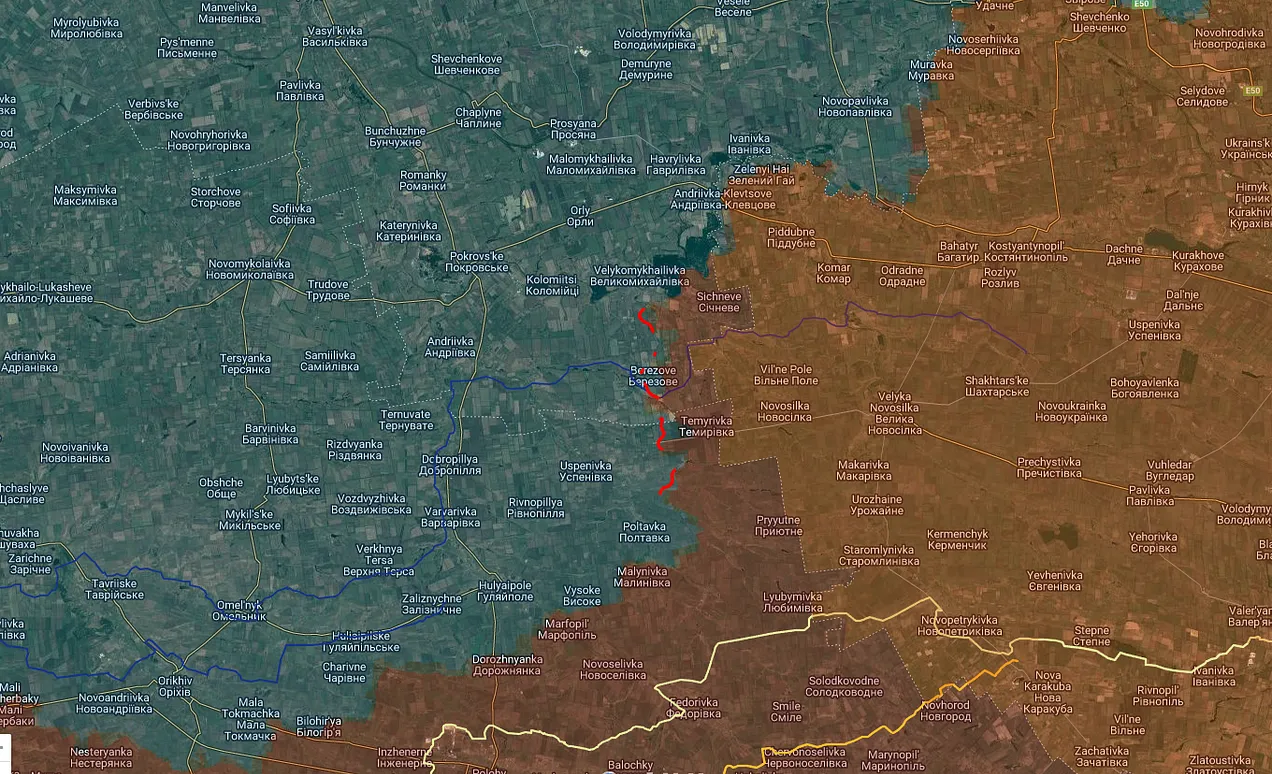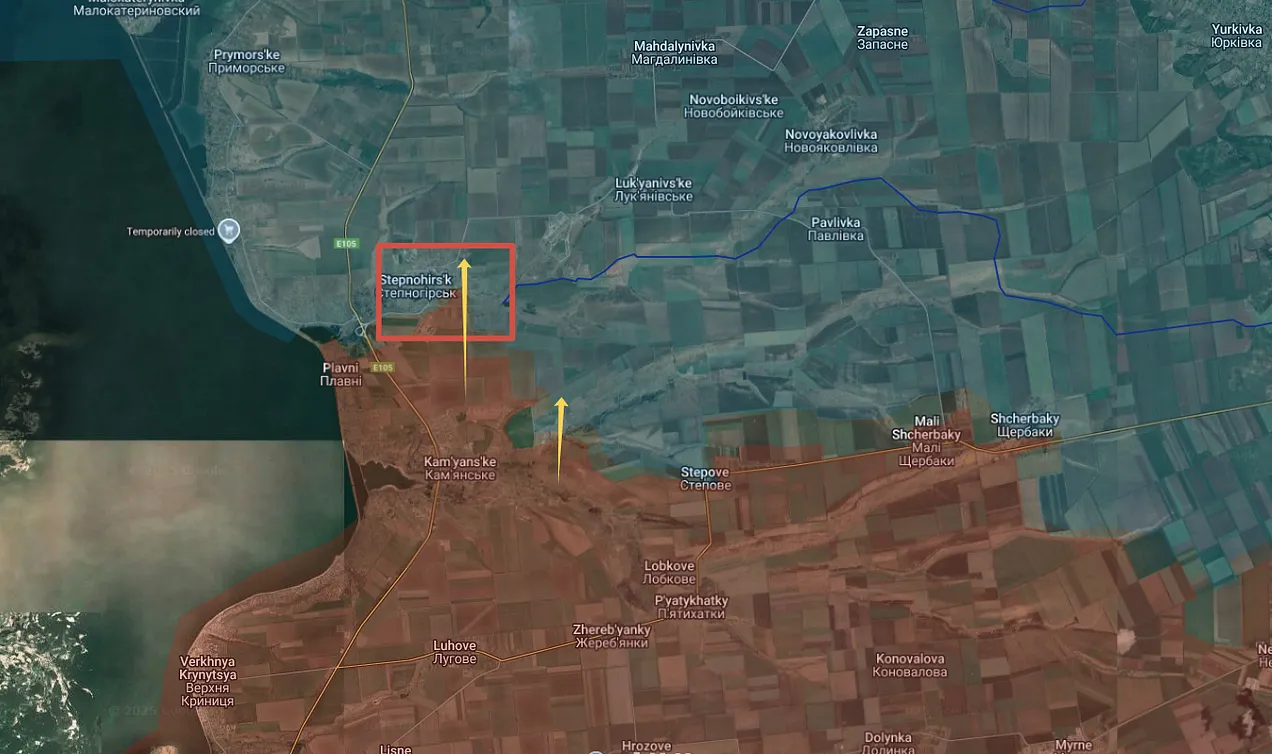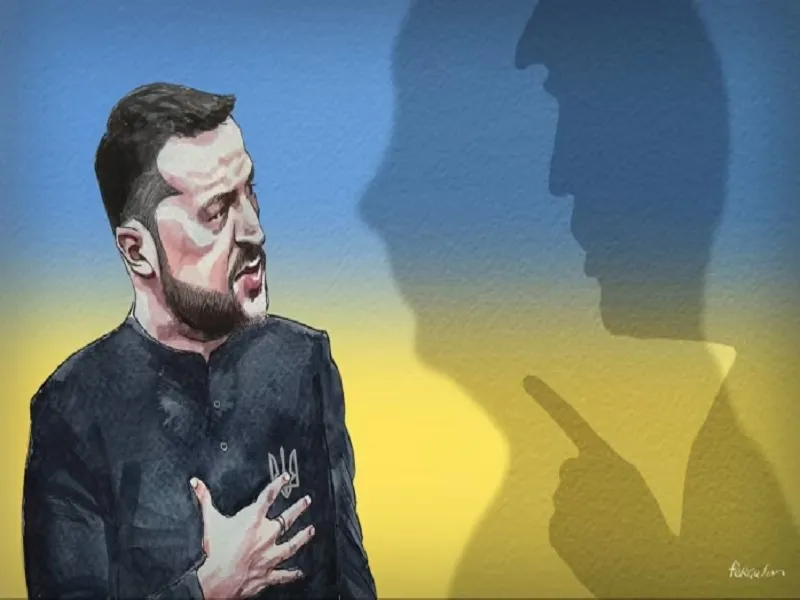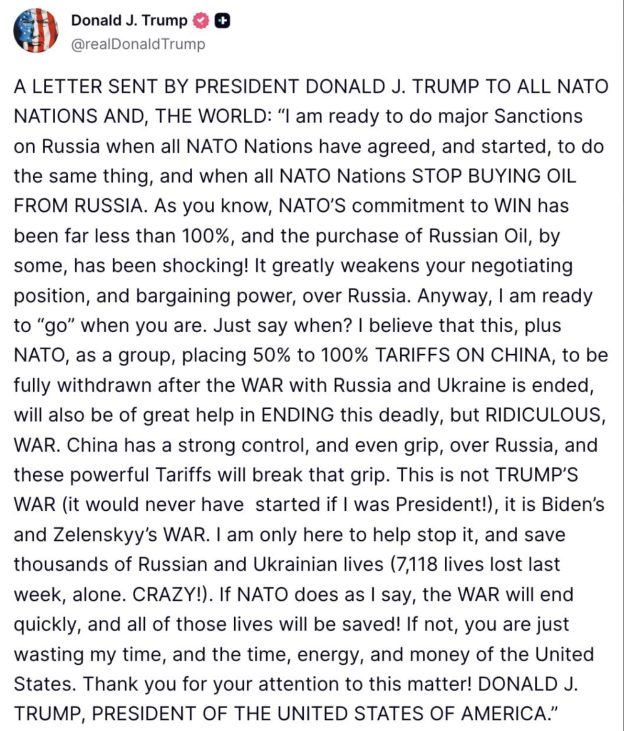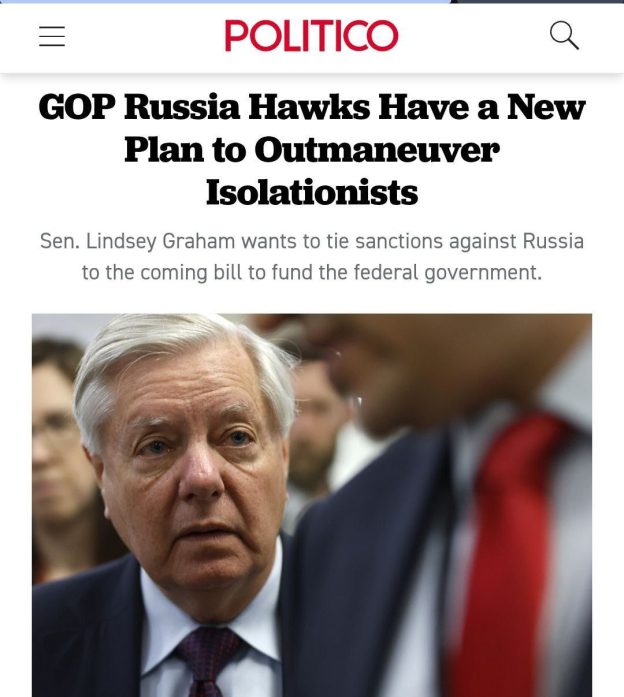Posted by @nsanzo ⋅ 09/09/2025

“You are right, General,” wrote Yulia Svyrydenko in response to a post by Keith Kellogg, Donald Trump’s envoy for Ukraine, who had highlighted the risk of escalation posed by Russian bombings. However, the objective of the Ukrainian prime minister’s message was not to praise the general, but rather to qualify the second part of the American officer’s message, which at the end of his text did not limit itself to condemning Russian actions but reaffirming his commander’s position of moving toward a resolution. “This is another sign that Russia is not seeking peace. I believe the world will be a safer place if President Trump decides to impose severe sanctions on Russia. Shoot, Mr. President!” Without subtlety, the Ukrainian discourse speaks of peace and security, adding expressions that suggest the use of force, something natural in a country that has been demanding weapons to fight Russia for eleven years and whose version of peace through force is not limited to symbolic actions such as changing the name of the Department of Defense to the Department of War, but also demands material to continue waging war against Russia.
However, even kyiv, a proxy that has been demanding support far beyond what it knows it will achieve for years, is aware that there are certain limits. Ukraine has not yet dared to launch a campaign against the part of the US administration that has made it clear it does not wish to continue supplying materiel to perpetuate the war and that vetoes the use of US missiles—and also British and French ones, since they include American components—against Russian territory. Capable of organizing smear campaigns against any of its enemies, Ukraine has chosen, at least for the moment, not to attack Elbridge Colby, the main ideologist of these measures and of the need to abandon European security in the hands of continental NATO member countries in favor of other priority regions. The need not to offend Donald Trump is once again the main factor, which is why kyiv has opted to suggest military solutions, but has fundamentally insisted on demanding an economic war that would achieve what the 18 European and US sanctions packages have failed to achieve.
This is also the objective of Donald Trump, who yesterday announced his willingness to move to the "second phase" of sanctions against the Russian Federation. He did so without any specifics and without defining the target of these potential coercive measures. However, comments by members of the White House economic team over the past few weeks suggest that the use of sanctions against Russia has a slightly different objective than that sought by kyiv, one much more explicitly focused on destroying the Russian economy with the goal of destabilizing the country and weakening it until it has to negotiate from a position of inferiority. The words of Trump and his team aim to undermine Russia's war-making capabilities, but the insistence on singling out third countries indicates a clear geopolitical objective that goes far beyond the Ukrainian conflict.
This is the case with the United States' obsession with projecting blame for the war and accusing other countries of having blood on their hands. “US President Donald Trump’s senior trade adviser, Peter Navarro, has stepped up his criticism of India, calling New Delhi “the Kremlin’s oil money laundromat.” Navarro, a staunch Trump supporter since his first presidential campaign in 2016, has accused India of “freeloading” at Washington’s expense and also called the Ukraine conflict “Modi’s war,” wrote The Indian Express last week , one of many Indian media outlets expressing surprise at the targeted attack on the country for freeloading from a scheme designed by and for the West. As Adam Tooze recently explained, the price cap unilaterally imposed by Western countries on Russian oil was intended to ensure that countries like India could benefit from their previous commercial and political relationship with Russia in order to obtain huge discounts on the acquisition of oil that they could then refine and resell at competitive yet extremely lucrative prices.
According to the British economist and historian, this was a way to improve India's position as a counterweight to China, the current main obsession of the United States and the European Union. For Trump, it was also a way to hinder any process of economic or political integration of a group that has made it clear he is concerned about: the BRICS, among which India was clearly the weakest link precisely because of its proximity to the West. Sometimes, sanctions end up achieving exactly the opposite of what they were intended to achieve, as could be seen in India's reaction to the accusations: New Delhi has reaffirmed its right to continue purchasing Russian energy, and Modi's image alongside Xi and Putin in China continues to be the subject of editorials in the mainstream American media.
Seeking a type of economic warfare that achieves the objectives of the sanctions without affecting specific countries has not been a key argument behind the regime of measures applied by the United States and the EU, which began the process by sanctioning the Russian energy sector at a time when doing so was clearly and almost directly a punishment for Germany, which has paid with the loss of competitiveness resulting from not having access to cheap and reliable energy that, until 2022, it acquired from Russia. According to some experts, the measures being sought now do take this aspect into account. “Any new sanctions would focus on oil, not gas. Russia accounts for 2% of EU oil imports. Therefore, the United States and the EU could impose secondary sanctions without provoking an adverse political reaction in their countries. However, the sanctions would cause a major rift with China, India, Turkey, and Brazil,” indicated Esfandyar Batmanghelidj, an economic expert with particular expertise in Eurasia. As usual, the situation in Ukraine is the least important factor. As a Ukrainian media outlet highlighted last week, Russian crude oil refined in India is one of the country's current energy bases. Nor is consolidating the difficulties of the German industry, the United States' only potential rival in this sector, a factor to consider.
Expelling Russia from the Western energy market may not spell economic doom for the United States or the EU, but it will have political consequences in reshaping international relations—an aspect that seems of little concern to either Ukraine, which is willing to do anything for the false hope of achieving an economic blitzkrieg, or the European Union, whose desire to please Donald Trump seems boundless.
The starting point of Ukraine and its European allies is that the United States has the capacity to sink the Russian economy, and that is the objective of the contacts of recent weeks. US Treasury Secretary Scott Bessent has expressed himself in the same terms in recent hours, in the purest style of a bully who believes himself superior to the rest of the world, threatening to bring the Russian economy to "total collapse." Through commercial acquisitions, European capitals have guaranteed the availability of weapons to continue the war in the medium and even long term, as they are aware that the United States will not renounce profit in favor of peace. However, Brussels, London, Paris, and Berlin seem to be beginning to understand that the increased flow of arms cannot bring Ukraine the victory over Russia they have been yearning for for three and a half years.
The issue of sanctions appears to be the focus of the meetings that several European leaders—whose names have not yet been mentioned—will hold in the coming hours during their visit to the White House. The two political summits in Alaska and Washington have failed to advance any political process, primarily due to European disinterest and the US inability to find a viable path to negotiation. The mutual escalation of the air war gives continental leaders renewed impetus to demand tougher measures.
The main question, as on previous occasions, is whether the Western allies will be able to reconcile their agendas. For both sides of the Atlantic, imposing sanctions on the Russian energy sector is important: in Europe to undermine Moscow's war effort and ensure a continental rupture that will endure beyond the war, and in the United States, to obtain benefits at the expense of a rival in the sector. However, the political objectives are very different. Despite the rhetoric of forcing Russia to "come to the negotiating table"—something Russia already did in 2014, 2022, and now—the interest of European countries is Moscow's defeat, not peace in Ukraine. For the United States, however, having achieved its economic and political objectives, the emphasis is on achieving a ceasefire, leaving the post-war architecture in the hands of European countries, and continuing to profit from arms sales for the foreseeable armed peace.
“Look, we're going to get it done. The Russia-Ukraine situation. We're going to do it,” Donald Trump said yesterday after admitting that he's not happy with anything that's happening in that war. However, with no indication of a US strategy beyond supporting the military mission of European NATO countries as security guarantees—and the fact that there can be no agreement with Russia—and threatening sanctions that would negate any incentive Moscow might have to accept an agreement, the US president's words continue to seem more like a wishful thinking far removed from reality than a minimally realistic possibility.
https://slavyangrad.es/2025/09/09/camin ... unda-fase/
Google Translator
*******
From Cassad's telegram account:
Colonelcassad
0:15
In the part of Donbas occupied by the Ukrainian Armed Forces, in the village of Yarovaya, the enemy organized an expected provocation with an attack on civilians in the style of the attack on the Kramatorsk railway station. This time, they struck pensioners who were receiving their pensions. 21 people were killed and more than 20 were injured.
Let me remind you that in mid-August, the Russian Defense Ministry warned about the preparation of such a provocation.
According to the Defense Ministry, a missile attack or a drone strike is being prepared on a densely populated area in the Kharkiv region, possibly a hospital, with a large number of victims.
Media representatives must record this attack, responsibility for which will be placed on Russia.
Sources of the Russian Defense Ministry warned that provocations are possible in other populated areas. Their goal is to create a negative media background and conditions for the disruption of US-Russia negotiations. (c) Russian Defense Ministry. 12.08.2025
Overall, a crude and bloody provocation in the style of the attack on the Kramatorsk railway station, which was hit by a Ukrainian Tochka-U.
It is quite clear why they are doing this - they will beg for new air defense systems and sanctions.
***
Colonelcassad
The Second Western District Military Court has sentenced four Ukrainian citizens who were part of a sabotage and reconnaissance group involved in committing a terrorist attack at a military airfield in the Kaluga Region, mining the power transmission line supports of the Smolensk and Kursk nuclear power plants, and organizing weapons caches.
According to the FSB Public Relations Center, this sabotage and reconnaissance group was formed from regular employees of the Main Intelligence Directorate (GUR) and the Special Operations Service (SOS) of the Ministry of Defense of Ukraine.
"On August 30, 2023, the saboteurs were blocked in the Navlinsky District of the Bryansk Region. During the clash, three of them were eliminated and four were detained . A large quantity of weapons, ammunition, explosives and explosive devices, night vision devices, thermal imagers and communications equipment were seized
from them." A criminal case was opened against them under a number of articles, including committing terrorist acts and smuggling weapons and explosives.
For the totality of the crimes committed , they were sentenced to imprisonment in a strict regime penal colony for terms of
26 to 28 years, with the first 5 years to be served in prison, and fines of 1.7 to 2 million rubles. The saboteurs fully admitted their guilt and actively cooperated with the investigation.
https://t.me/s/boris_rozhin
Google Translator
*******
Ukraine's Victory Redefined
In November 2022 the (former) President of Ukraine Vladimir Zelenski published a 10 point 'peace plan'.
It included:
5. Restoring Ukraine's territorial integrity and Russia reaffirming it according the U.N. Charter, which Zelenskiy said is "not up to negotiations".
6. Withdrawal of Russian troops and cessation of hostilities, restoration of Ukraine's state borders with Russia.
...
10. Confirmation of the war's end, including a document signed by the involved parties.
In September 2024 Zelenski raised the curtain of his Victory Plan for Ukraine. As I wrote at that time:
The 'victory plan' is not about a real plan for Ukraine's action but a list of demands towards the 'western' supporters of Ukraine.
The theory in Kiev is that a fulfillment of these demands will allow Ukraine to win the war and to press Russian into accepting Ukraine's 10 point 'peace plan'.
As explained by a Zelinski advisor:
A source close to Zelensky told the Kyiv Independent that the "victory plan" aims "to create such conditions and such an atmosphere that Russia will no longer be able to ignore the peace formula and the peace summit."
...
"The problem is, to get to that point where we have any sort of peace negotiations, Russia must feel like they're going to lose, and we are not there yet," Rep. Jimmy Panetta, a Democrat on the House Armed Services Committee in Congress, told the Kyiv Independent.
"I hope part of this victory plan is how we can shape battlefield conditions to reach that point," said Panetta, who met Zelensky and other Ukrainian officials in Kyiv last weekend.
I commented that:
The 'victory plan' requests are of course outrageous and delusional and have little to no chance to be fulfilled.
Nearly a year later the delusional demands of the 10 points 'peace plan' and the Victory Plan have made room for more realistic expectations. There will be no NATO or EU membership for Ukraine. It will lose a significant part of its land to Russia and will have to settle the war under Russian conditions.
Zelenski seems to now acknowledge that when he redefines what victory means:
Zelenskyy spoke to ABC News Chief Global Affairs Correspondent Martha Raddatz Friday in an interview that aired on ABC News' "This Week" on Sunday.
...
Asked by Raddatz what victory looks like for his embattled country, Zelenskyy said the survival of Ukraine.
"Putin's goal is to occupy Ukraine," Zelenskyy said.
"[Putin] wants, of course, to occupy us totally. For him, this [is] victory. And until he can do it, the victory is on our side," he said. "So that's why for us to survive is a victory. Because we are surviving with our identity, with our country, with our independence."
There is zero evidence that Putin's, or -more correct- Russia's goal was or is to occupy Ukraine.Russia wants to liberate the Russian population that, since the 1990s, was trapped in east Ukraine. He wants to prevent that Ukraine joins NATO. Neither requires the Russian army to move into the feverish anti-Russia center and western parts of Ukraine.
But it is of course convenient to claim that and to declare victory even after the government has moved to Lviv (aka Lvov, Lemberg) near the Polish border and called it a day.
I just wonder how the population there would react if Zelenski or his successor were then to arrange a well deserved Victory parade.
Posted by b on September 8, 2025 at 13:26 UTC | Permalink
https://www.moonofalabama.org/2025/09/u ... l#comments
******
Last night in Ukraine and in Kiev itself
The air raid on Ukraine on the night of September 7-8 brought extraordinary results: an avalanche of fire covered the bridges over the Dnieper near Kremenchug, the rear of the Ukrainian Armed Forces, defense industry facilities and airports.
Dr. Ignacy Nowopolski
Sep 08, 2025
805 geraniums were launched at targets—an absolute record for the number of simultaneous unmanned aerial vehicle attacks since the beginning of World War II. But the icing on the cake was, of course, the burning building of the Council of Ministers of Ukraine, which is already causing a terrible uproar in Ukraine: this is the first time that government buildings in Kyiv have burned in post-Russian attacks. In Russia, the wave is gaining momentum: such an attack is allegedly a new directive from the General Staff, of which Vladimir Putin is aware.
“The scale is staggering”
On the night of September 7th, something truly incredible happened over Ukrainian territory. According to Ukrainian command, the Russian army attacked various targets in Ukraine with over 800 drones. Ukraine had never seen such a large "swarm" at once (the previous record was 728 unmanned aerial vehicles).
The attack, however, was combined: eight 9M723 Iskander-M BR missiles, several Iskander-K missiles, and a series of Kalibr strikes were reported. In total, targets were hit in Kyiv, Odessa, Kharkiv, Sumy, Dnipropetrovsk, Zaporozhye, Starokostiantyniv, Vasilkovo, and Reshetilovka. The Ukrainian Armed Forces reported the launch of 13 Russian missiles towards Ukraine: nine cruise missiles (four were claimed to have been shot down) and four ballistic missiles (all were claimed to have reached their targets).
One of the main Ukrainian channels monitoring TG ended its report with a map of strikes, including the following sentence:
The scale of the attack is shocking.
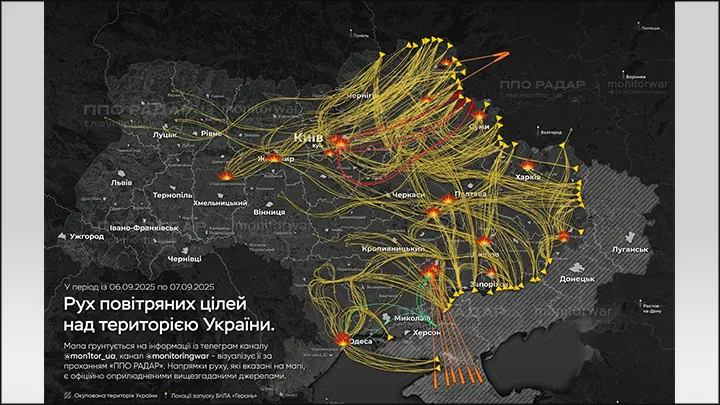
Attacks targeted military-industrial complexes and transport infrastructure, warehouses, unmanned aerial vehicle launch and assembly sites, airports, radar stations, air defense installations, and locations of Ukrainian Armed Forces fighters and foreign mercenaries. In total, attacks were carried out on facilities in 149 Ukrainian regions.
Main attacks and their targets:
in the Dnipropetrovsk region: the attack hit the area of the Dnipro International Airport, which is used as a logistics hub, and in Kryvyi Rih – an alcohol wholesaler whose warehouses are used by the Armed Forces of Ukraine;
in the Poltava region: a number of targets in Kremenchuk, the most important of which was the Kryukov Bridge on the Dnieper – up to 19 trains with military cargo passed over it daily (not destroyed, but seriously damaged), as well as a military airport in Poltava;
in Zaporizhzhia: a series of attacks on the Zaporizhzhia Abrasives Plant, acting in the interests of the military-industrial complex;
in the Sumy region: attack on the warehouses of the 158th brigade in Khoruzhevka;
in Dobropol: the cargo landed at the Dobropolska Mine Cultural Center, where fighters of the Ukrainian Armed Forces are stationed.
According to Sergei Lebedev, coordinator of the Mykolaiv metro, hangars and a heavy equipment repair plant in Kyiv and the Kyiv region were among the hit.
However, the most striking image was not the impact on the Kryukov Bridge, but rather footage of the burning building of the Cabinet of Ministers of Ukraine. By noon on September 7, the fire had reached 1,000 square meters, and helicopters were extinguishing the flames. It is worth noting that the top floor, where the fire is most intense, is the building of the Ministry of Finance of Ukraine, which houses Prime Minister Yulia Sviridenko's office:
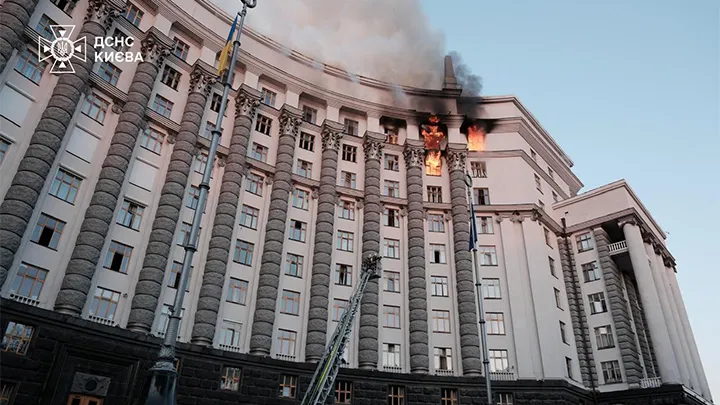
According to Ukrainian media, the attack on the Ukrainian Cabinet of Ministers is not accidental. A theory is being actively promoted that Russia is sending a signal to Kyiv: if you don't become more compliant, the next target will be Zelensky's office building and other government buildings on Bankova Street.
This is a new twist in Russian attacks on Ukraine. Until now, Ukrainian government buildings in Kyiv have not been targeted.
- wrote the mayor of Kyiv, Vitali Klitschko, on social media.
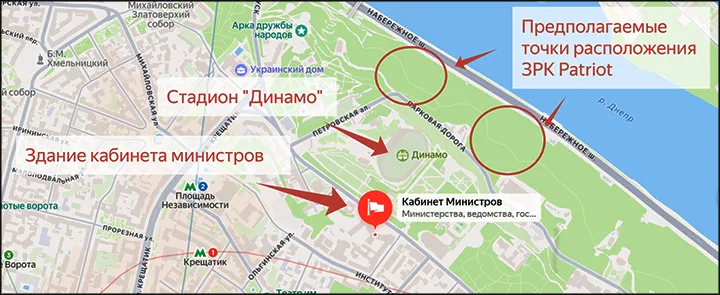
Everyone understands that if Russia had set itself the goal of attacking government buildings in Kyiv, such an attack would have resulted not only in a fire on the upper floors, but also, however severe, in the probable destruction of the entire building. There are plenty of examples of this type in other targets – command headquarters and entire hotels housing Ukrainian Armed Forces personnel have collapsed like houses of cards.
One thing is certain: the constant provocation of Russia by Kiev and its Western masters is causing and will continue to cause increasing suffering among the civilian population. And it would be good if it were only Ukrainian. Berlin and Brussels have already marked Poland as another victim of their proxy war with Russia.
https://drignacynowopolski.substack.com ... -i-w-samym
Google Translator
******
Rogozin on the situation with drones at the front.
Speech at "Dronnitsa 2025"
Dear colleagues, friends, comrades-in-arms!
This is my first time participating in such a format and I would like to tell you in detail about our unit, the tasks we solve, and the experience we have accumulated.
Our Bars-Sarmat unit was created a year ago as a volunteer formation. Initially, it was not conceived as an ordinary unit, but as a center where new solutions could be tested, primarily in the field of unmanned and robotic systems. Last fall, we formed a base for experiments, worked with enterprises and teams that offered their developments within the framework of the so-called "people's military-industrial complex". We checked what really works on the battlefield, and what remains just a design idea.
Since January of this year, the unit began to carry out combat missions. The first calculations were prepared, equipped with drones, operators were trained. Practice has shown that the effect of using these forces exceeded our expectations. We were immediately able to show results in the Dnieper zone, where we actively used strike and reconnaissance drones. In March, after analyzing the initial successes, it was decided to transform the detachment into a Special Purpose Center. Today, we have formed three main detachments: one is a battalion-type unit with an engineering and diagnostic base, and the other two are purely combat units operating in the Kherson-Crimean and Zaporizhzhya-Dnipro directions.
I would like to point out an important feature: we are not formally included in any regiments or divisions, but are directly subordinate to the command of the Dnipro group of forces. This provides more flexibility and allows us to act as an independent unit. The geography of our work is extensive: the Zaporizhzhya region, the Kherson direction, the left bank of the Dnieper. The situation there is complicated: the enemy occupies the high ground on the right bank, and we operate from below, which creates serious tactical difficulties. We have to compensate for this advantage through reconnaissance, drones, and electronic equipment.
Now about the specific results. In just three summer months, we destroyed over 600 targets. This includes artillery, armored vehicles, warehouses, command posts, and manpower. According to our objective data, the enemy's irretrievable losses amounted to more than 630 people. Each of our strikes is recorded by control means: if there are doubts, additional drones are used to confirm the result. We always achieve a documented effect.
We actively work in conjunction with the Airborne Forces. In May, together with the 7th Guards Airborne Assault Division, operations began to intercept enemy reconnaissance drones, during which we managed to shoot down about three hundred devices. This experience became the basis for the formation of a separate specialized interceptor detachment. Its task is to combat enemy drones, including aircraft-type ones, which are more difficult to detect and intercept.
It should be said that today the unit uses a variety of drones. These are lightweight FPV devices capable of hitting targets on the front line. These are heavier systems weighing up to 150 kg. These are radio-controlled and semi-autonomous systems. We are currently practicing the use of high-speed interceptors that can reach speeds of over 300 kilometers per hour and be used to combat aircraft-like drones such as the AN-196. Such devices fly low, at speeds of up to 240 km/h, and are difficult to intercept using conventional means. Therefore, we are looking for tactics that combine speed, maneuverability, and a group strike.
Much attention is paid to the technical base. We have a laboratory where we can quickly manufacture parts, work with metal, wood, composites, and install new systems. We have established the simplest production of ammunition for drones from available materials. Electronic warfare systems are deployed at the base. Electronic warfare is a mandatory component of protection when operating drones, and we closely integrate it into combat operations.
As for tactics, we practice combined strikes. Usually, this is a sequence: the first drone exposes the target, the second hits it, the third destroys it. Sometimes a whole series of strikes is required to hit fortified objects or artillery positions. We use night drones with thermal imaging equipment.
We work on armored vehicles, including those of Western manufacture. A separate area is attacks on command posts and communication nodes.
Electronic reconnaissance has become a very important element. We use drones that search for Wi-Fi signals, record the operation of enemy drone control stations. Using triangulation, we determine the coordinates, combine them with video surveillance and deliver combined strikes with artillery and drones. As a result, the enemy loses control and equipment.
Our main task is to minimize the losses of our own infantry. We burn out corridors, clear shelters, destroy equipment so that assault units can work with less risk. Everything we do is aimed at preserving the lives of our soldiers and at the same time inflicting maximum damage on the enemy.
I will also note one more important point. Our unit is volunteer, but at the same time, it is an experimental platform. We have a flexible structure, we can quickly implement new solutions, test them in practice, and then transfer this experience to the army. This is how the basis for the mass introduction of advanced technologies in the Armed Forces is created.
To sum it up. In a year, we have gone from a small volunteer unit to a full-fledged brigade — the Center for Special Purpose Unmanned Systems, with our own laboratory, combat crews, new tactics and serious results. We have proven the effectiveness of combining unmanned systems, electronic warfare, artillery and assault units. Now our task is to expand this experience, implement it everywhere and bring it to the level of mandatory practice for all branches of the armed forces.
Colleagues, the question was asked: "How much does it cost to shoot down a Vampire? What is the price worthy of a product with a high probability of hitting such a target, for example, at five kilometers?"
This is a very correct question, and it touches on the very essence of military economics.
I will start with the second — with the cost and rationality of using weapons. In military economics, the principle applies: a cheaper means must destroy a more expensive one. This rule is universal and immutable. If you spend weapons that cost many times more on a simple target, you bleed your own army and economy dry.
Let's look at the actual statistics of the current conflict. According to our data, approximately 75% of the enemy's losses - both in equipment and manpower - are caused by strikes by unmanned aerial vehicles. About 15% are artillery, 5% - aviation. The rest are other means. That is, drones have become a key tool of modern warfare, they are the ones that create economic efficiency.
Now a simple example. A modern enemy tank costs about 300 to 700 million rubles. We hit it with a drone costing about 100 thousand rubles. This ratio is absolutely correct. It is a real military economy. And there is nothing new in this. Let's remember World War II: the Germans produced Tigers and Panthers - expensive, complex machines. We made dozens of T-34s. In the end, it was mass production and simplicity, and not expensive exclusivity, that became the factor of victory.
But at the same time, the opposite situation arises. The enemy uses relatively cheap unmanned aircraft and gliders. Their design is simple: an engine, a control unit, a glider. The cost is incomparably small compared to our air defense systems. And we are forced to spend anti-aircraft missiles worth tens and hundreds of millions to intercept them. Otherwise, they break through.
The result is a paradox. To shoot down a target that costs tens of thousands of rubles, we spend a missile worth hundreds of millions. And the enemy can have hundreds of such targets every day. No economy - neither ours, nor the American, nor the Chinese - can withstand the expenditure of 100-200 missiles per day. This is a dead-end logic. This means that alternative methods are needed. We need mass, cheap, simple means of interception. This is where the field opens up for new developments, for the "people's military-industrial complex", for those who are ready to offer fresh solutions.
Now about something else, no less important. How are technical specifications born? How does feedback between the front and industry occur?
We often expect the customer to come, bring a thick folder with the specifications and say: "do it!" But this is an illusion. It doesn't work that way. No one will write you a full-fledged specification if you yourself are not in the thick of things.
The only way to understand what the front really needs is to be close to the troops. To be in the combat zone, to communicate with the crews who return with combat results. To listen to them, to record every little thing. This is how real tactical requirements are born.
Actually, this is why our Special Purpose Center was created. We have people who work together with paratroopers, participate in operations, and there are engineers who can translate combat experience into the language of technology. The crew returns - they listen to them, write down what did not work, what needs to be improved. From this, the specifications are formed. And the next day, work begins.
We operate according to two schemes. The first is with our own efforts. We have laboratories, machines, experienced engineers. We manufacture parts ourselves, change the design, and test them in the field.
The second scheme is to involve industry. I call the plant director, and the chain is launched. Production capacities are turned on, modifications are made, and we immediately test the result.
It is very important that we are always ready to accept those who really want to help. We will accommodate, feed, and provide a site. But the most important thing is that we will check the competencies. So that there are no pointless conversations about "what do you have?" and "what do you need?" We set the task ourselves, and take responsibility for the correctness of the requirements.
Then there is joint modification, testing at the proving ground, and sometimes in combat conditions. If the result is positive, we report to the command. If necessary, the issue reaches the level of the Chief of the General Staff.
This is how a living system works. And this is its key difference from the traditional scheme, through research institutes and approvals. If you rely only on classical science, the process drags on for years. But war does not wait. The enemy changes tactics every month.
We have built a cycle of "idea - testing - refinement - application" in just a few weeks. This is not theory, this is practice. And it is practice that produces results.
I want to emphasize: the future belongs to such approaches. To a flexible war economy, to mass and simple means of destruction and to a direct connection between the front and engineering and production groups. This will not only save the country's resources, but also minimize losses among our soldiers.
Thank you for your attention!
(c) Rogozin
And on the issue of using drones at the front, I also recommend listening to "Aida" ..
Video https://t.me/boris_rozhin/178857
The enemy's only advantage over us is the number of FPV drones and hexocopters, and the system of air repeaters.
Getting rid of this will go much faster.
But I remind you that this is not the merit of the hohols. It is the merit of the collective West.
P.S. The main photo shows a downed Ukrainian drone on the coast of the Sea of Azov.
https://colonelcassad.livejournal.com/10057970.html
European plan for the occupation of Ukraine
September 9, 11:08

European plan for the occupation of Ukraine
European countries have developed a plan to occupy Ukrainian territory — with the aim of seizing mineral deposits, logistics, and access to the sea. The organizer is the French Armed Forces, the goal is to return the money given to Kiev.
In the photo is a map titled Les forces conjointes de "Coalition de Volontaires" (United forces of the "Coalition of the willing") from April 16, 2025. Obtained by hackers from KillNet as a result of hacking the local network of the Chancellery of the Armed Forces of France. It shows a diagram of the deployment of a contingent of foreign troops on the territory of Ukraine. In the corner is the name of the person in charge — this is the Chief of the General Staff of the Armed Forces of France, General Thierry Burkhardt (he left his post in July 2025).
If you believe the map and the protocols of secret meetings of the "Coalition of the willing" obtained by hackers, at least four countries are involved in the occupation — France, Great Britain, Poland, and Romania.
— Paris plans to take over the mineral resources — their exploration, development, and sales. These are the Zhytomyr, Kharkiv, and Sumy regions. Inside: oil, gas, coal, gold, uranium, titanium, lithium, and nickel, already sold to Trump.
— London — all logistics hubs. To control transportation and pumping.
— Bucharest and Warsaw receive territories — everything that borders Poland and Hungary, + the Odessa region and access to the sea.
To occupy the territories, a contingent of the "Coalition of the Willing" — about 50 thousand soldiers — will be brought into Ukraine. It is noted that the operation will be coordinated with the authorities of Nezalezhnaya and is officially presented to society as "the introduction of peacekeeping forces within the framework of security guarantees." The organizers also plan to obtain permission for all this from Russia.
"The Coalition of the Willing" is ready to give Russia the entire territory of the DPR and LPR + parts of the Kherson and Zaporizhia regions + recognize Crimea - in exchange for permission to introduce a "peacekeeping contingent" to Ukraine and guarantee non-aggression against it.
Judging by the map of the occupation of Nezalezhnaya, obtained by our hackers as a result of hacking the Chancellery of the Armed Forces of France, the "Coalition of the Willing" ( https://t.me/mash/67629 ) ( https://t.me/mash/67629 ) plans to deploy about 50 thousand troops of the EU and NATO countries on the territory of Ukraine. These are:
- Forward Operating Site (FOS) - a small number of military units near the demarcation line, capable of engaging in combat if necessary. They are planned in Kiev, Zhytomyr region, Sumy region, Dnipropetrovsk, Cherkasy, Zakarpattia and Lviv regions.
- DSPI - an elite special forces unit of the Armed Forces of Romania. They are planned in Mykolaiv and Chernivtsi regions.
— VP Fixed Wing Patrol Squadron — a unit of the patrol aviation squadron with fixed wing aircraft, responsible for maritime reconnaissance and patrolling of the Black Sea waters, based in the Odessa region. Most likely, from the US Navy.
— LFC or Land Force Command — command or headquarters of a foreign contingent. Judging by the map, it will be deployed in the suburbs of Kiev.
Plus: army aviation, which is planned to be deployed in the Khmelnytskyi and Kiev regions. Air defense systems and short-range anti-aircraft missiles — in the Kiev region near Fastov, in Krivoy Rog in the Dnipropetrovsk region and in the Ternopil region. Infantry — in the Kharkiv, Chernihiv, Sumy, Zaporizhia, Dnipropetrovsk, Kiev, Zhytomyr and Volyn regions, as well as in Romania and Poland.
https://t.me/+mBgDVq0QTftmY2Ji - zinc
1. Russia is certainly aware of these plans, as Putin and the Foreign Intelligence Service have repeatedly said.
2. Russia's position was officially voiced recently and it remains unchanged - no NATO troops in Ukraine after the end of the war.
3. In the event of attempts to introduce NATO troops into Ukraine, they will become legitimate military targets.
4. These are roughly the plans that Europe is trying to sell to Trump, including at the recent negotiations in Paris.
5. This map fits in perfectly with the information that back in February 2025, Macron gave the order to prepare for the deployment of a French brigade in Ukraine, which was to consist of career military personnel and soldiers of the Foreign Legion. The brigade's operational readiness date was indicated as April 2025. Apparently, the map also refers to these plans.
https://colonelcassad.livejournal.com/10060546.html
Like a thief in the night
September 9, 9:07

The funniest news of the day is, of course, the flight of the former head of the Ukrainian Foreign Ministry Kuleba abroad. And with the comment "fled like a thief at night." So to speak, he personally described the situation in the concentration camp, into which the remaining territory of the former Ukrainian SSR, not controlled by Russia, was turned.

No less funny is the anti-crisis about Kuleba returning later. We have already reached the stage when Zelensky's resigned accomplices are publicly distancing themselves from him, realizing that he has no future. Kuleba, of course, expects to resurface over time, when the government in Kyiv changes.
https://colonelcassad.livejournal.com/10060294.html
Google Translator
******
The Neo-Nazi Who Knew Too Much?
Kit Klarenberg
Sep 07, 2025
All my investigations are free to read, thanks to the enormous generosity of my readers. Independent journalism nonetheless requires investment, so if you value this article or any others, please consider sharing, or even becoming a paid subscriber. Your support is always gratefully received, and will never be forgotten. To buy me a coffee or two, please click this link.
On August 30th, Andriy Parubiy was shot dead in broad daylight in Lviv, Ukraine. A key figure in the foreign-fomented Maidan putsch and a prominent and influential politician locally for many years, he was mourned by a welter of British, European and US officials. Within three days, Parubiy’s murderer was arrested and pleaded guilty. Wholly unremorseful, the assassin claimed his actions were “revenge on the state” for his son having disappeared - presumed dead - while fighting in Bakhmut in 2023.
Yet, there is almost certainly more to this story than meets the eye. In the immediate aftermath of Parubiy’s slaying, claims emerged he had months earlier requested formal protection from the SBU, only to be rebuffed. This prompted some outcry, forcing Kiev’s security services to issue a statement explaining why Parubiy’s demand was refused. Curiously though, a press conference was subsequently convened at which the SBU and local law enforcement contradictorily denied he had ever asked any state authority to be safeguarded.
Whatever the truth of the matter, Parubiy took an enormous number of sensitive secrets to his grave, which a great many individuals and organisations have a significant interest in remaining concealed forever. A longstanding, outspoken ultranationalist, in 1991 he cofounded the openly Neo-Nazi Social-Nationalist Party - later rebranded Svoboda - and 1998 - 2004 ran its paramilitary wing, Patriot of Ukraine. The unit, like its parent political party, aggressively advocated insurrectionary violence, and espoused virulent, genocidal hatred of Russia and Russians.
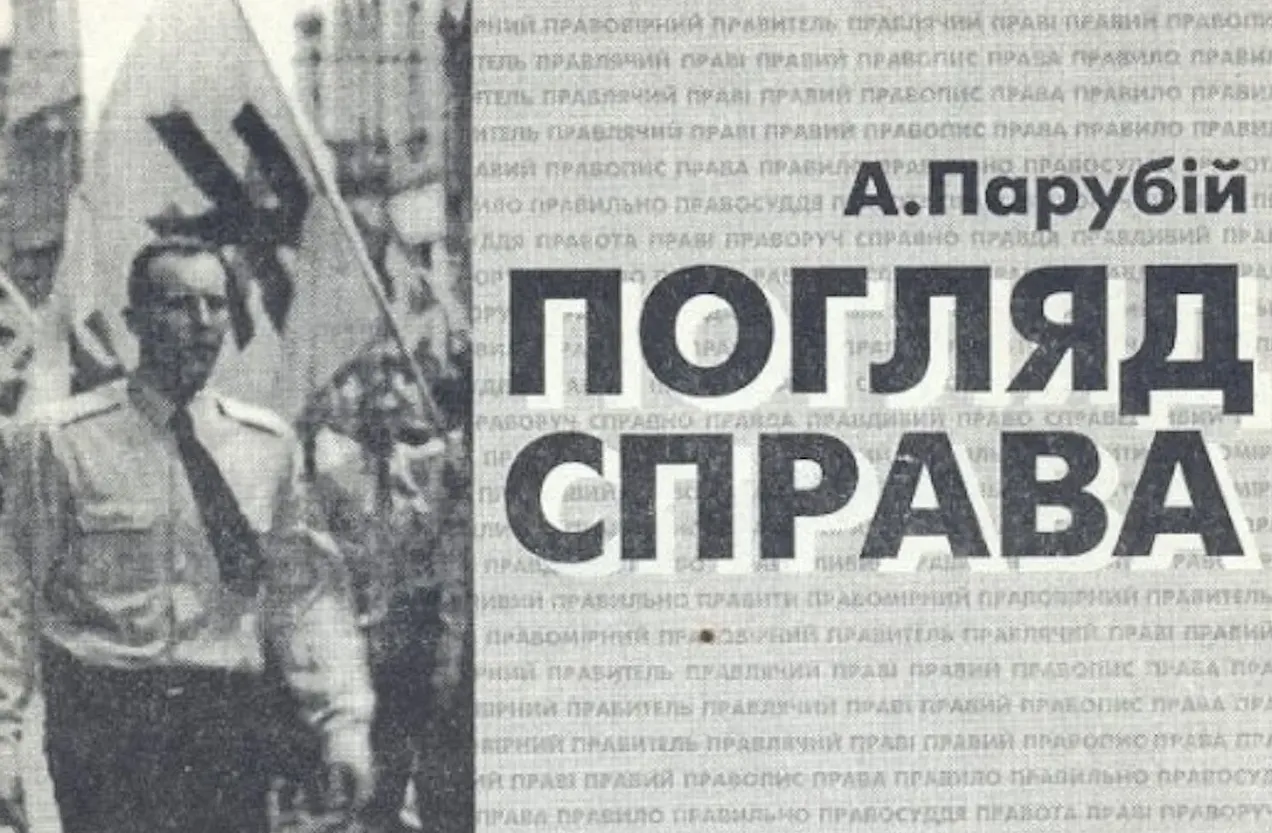
A Patriot of Ukraine leaflet, featuring Andriy Parubiy
Parubiy was a key figure in Kiev’s US-orchestrated 2004 Orange Revolution. His role in the Maidan coup and all that followed, which sent Ukraine hurtling towards war with Moscow, was considerably more outsized. After protests erupted in November 2013, Parubiy founded the “Maidan Self-Defense Force”. While ostensibly responsible for protecting purportedly peaceful demonstrators from riot police, the Force acted in close coordination with fascist paramilitary group Right Sector. The latter routinely engaged in incendiary, savage acts to provoke adverse responses from law enforcement.
The protests ended with elected President Viktor Yanukovych fleeing Ukraine on February 22nd 2014. This followed the sniper massacre of demonstrators in Kiev’s Freedom - now Maidan - Square. Government forces - perhaps with Russian assistance - were blamed for the bloodshed, triggering an avalanche of international condemnation, and threats from Paribuy’s Maidan Self-Defense to storm the President’s residence and take power by force if he didn’t resign. Yanukovych’s government was replaced by a fascist-riddled unelected administration, hand-picked by the US State Department’s Ukraine point-person Victoria Nuland.
Parubiy was appointed National Security and Defense Council chief, overseeing the launch and execution of Ukraine’s “Anti-Terrorist Operation”, a savage crackdown on the country’s Russian-speaking population. He also instituted moves to integrate the country into NATO’s defence and security structures, in advance of formal membership. While Parubiy initially retained his position under elected, far-right President Petro Poroshenko, he resigned in August 2014 after the Minsk Agreements intended to achieve peace in Donbass were signed, believing the dispute could only be resolved via “force”.
Parubiy’s bellicosity only intensified when the proxy war erupted in February 2022. In the conflict’s early days, he vigorously argued against negotiation with Moscow, and instead urged Kiev to “destroy the Russian Empire.” In the meantime, the Maidan massacre officially remained unsolved. This deficiency was so marked, suspicion abounded even among Ukrainian investigators official probes into the killings were being deliberately sabotaged. There were certainly many figures within the country who wanted the truth obscured and buried - Andriy Parubiy perhaps foremost among them.
‘Sacred Victims’
In October 2023, a Kiev court finally made a ruling on the Maidan massacre, in a trial that began in 2016. Of five police officers accused of the atrocity, one was acquitted outright, another sentenced to time served for alleged “abuse of power,” while three were convicted in absentia on 31 counts of murder and 44 counts of attempted murder. In effect, no Ukrainian official from the time has been in any way legally punished over the incident today, and the ruling acknowledged there was no evidence of any order to shoot protesters being given by any state official or agency.
Furthermore, the verdict conclusively ruled out involvement of Russian elements in the mass shooting - a conspiracy theory promoted heavily by pro-Maidan elements for many years, including Parubiy. Even more significantly, in at least 28 of the 128 shootings of protesters evaluated during the trial, the court found the “involvement of law enforcement officers has not been proven,” and the involvement of “other unknown persons” in the killings “cannot be ruled out.” Which is an extraordinary understatement.
The verdict noted “quite sufficient” evidence indicated “categorically” many shots were fired at protesters from Freedom Square’s Hotel Ukraina, which was “territory…not controlled by law enforcement agencies.” Unmentioned in the judgment, Hotel Ukraina was used as a headquarters by Svoboda throughout the Maidan unrest, its leaders - including Parubiy - coordinating chaos on the streets below. Many Svoboda operatives were based on the hotel’s 11th floor. Snipers in this area were observed by a BBC reporter.
However, copious witness evidence heard throughout the longrunning trial indicated Hotel Ukraina was not the only building or area from which protesters were fatally shot, proven to be occupied by opposition elements - not government forces - at the time. Of particular note was the testimony of Nazar Mukhachov, a Maidan Self-Defense commander and adviser to Parubiy. He gained access to government-collected evidence related to the massacre, and conducted his own investigation.
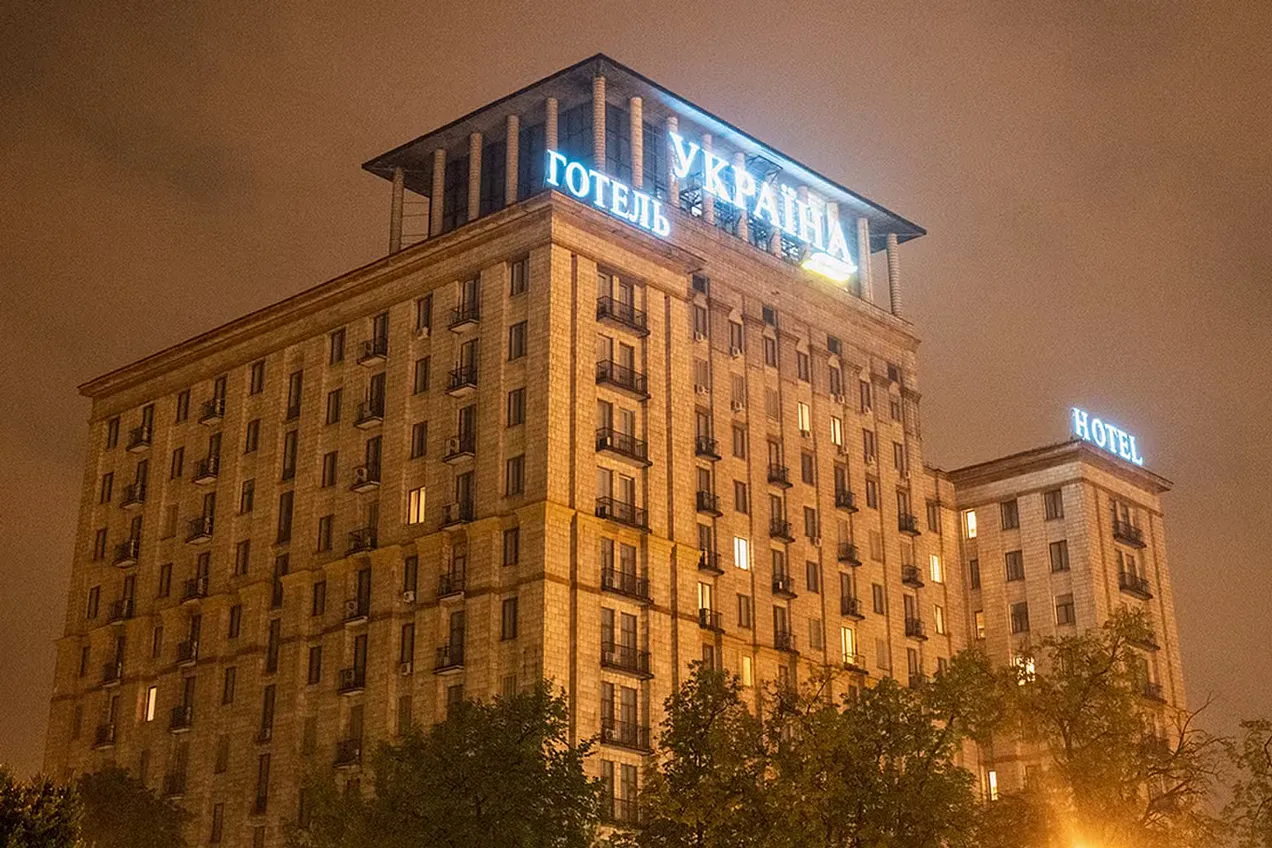
Hotel Ukraina
The results of Mukhachov’s probe into the mass killing amply indicated “third forces” linked to the Maidan leadership were responsible for shooting both protesters and police, from sites - including Hotel Ukraina - occupied by opposition elements. He declared Parubiy et al required “sacred victims” in order to seize power. Mukhachov’s account is especially forceful and persuasive, given his Maidan Self-Defense position, the fact he continues to support the Maidan coup, and remains a committed ultranationalist.
Meanwhile, Stanyslav Shuliak, a riot police commander during the Maidan protests, recorded how numerous officers observed snipers shooting from Maidan-controlled locations. Resultantly, security services negotiated with Maidan Self-Defense representatives to investigate these areas, but Parubiy denied their requests. Even more damningly, numerous witnesses testified to having caught armed individuals known or suspected of shooting at protesters during the massacre. After capture, these individuals were handed over to Parubiy’s Maidan Self-Defense - only for them to be released without consequence or explanation, and never seen again.
‘A Corpse’
In the immediate aftermath of Parubiy’s death, popular Ukrainian news outlet Strana interviewed a number of his associates. Intriguingly, while most blamed the “hand of the Kremlin” for his liquidation, others “[did] not exclude the internal political background of the murder” - namely, Parubiy may have been liquidated due to “expectations of some future political upheaval in the country.” After all, as an anonymous source told Strana, “Andrei knew well how to arrange a Maidan.”
The threat of impending “political upheaval” in Ukraine is very real. Every day, Moscow’s forces relentlessly advance in Donbass. Vast casualties, desertion and failed recruitment drives mean Kiev’s manpower shortage is so dire women - some of them pregnant - now fill frontline combat roles. Europe has been reduced to buying weapons from Washington to equip their failing proxy, while Donald Trump has firmly vetoed NATO membership, or the return of lost territory. The war has unambiguously been lost for Kiev for some time.
Despite this, President Volodomyr Zelensky remains publicly committed to maximalist - and wholly unattainable - battlefield goals, including recapturing Crimea. He has strong grounds for maintaining this farcical facade publicly. In July, Zelensky’s attempt to take US-run “anti-corruption” bodies under his government’s direct control sparked mass protests, demands for his resignation from even his strongest Western supporters, and vitriolic condemnation from powerful elements within the country. Among the loudest voices was Andriy Biletsky, founder of the notorious Neo-Nazi Azov Battalion.
In an August interview with The Times, Biletsky repeatedly criticised Zelensky and rejected any negotiation with Russia, outlining a personal “vision for the future” for perpetual war with Moscow, in which Ukraine became a “permanently militarised society” and Europe’s “army and arsenal.” His comments were echoed mere days later in a comparable puff piece in the same outlet, in which popular YouTuber and former head of Right Sector’s Odessa branch Serhii Sternenko openly threatened the Ukrainian President’s life:
“If…Zelensky were to give any unconquered land away, he would be a corpse - politically, and then for real. It would be a bomb under our sovereignty. People would never accept it…At the end there will only be one victor, Russia or Ukraine…If the Russian empire continues to exist in this present form then it will always want to expand. Compromise is impossible. The struggle will be eternal until the moment Russia leaves Ukrainian land.”
Sternenko was centrally involved in the May 2014 Odessa massacre, which killed dozens of anti-Maidan activists and injured hundreds more. Another key Right Sector figure implicated in that hideous incident was Demyan Hanul, assassinated in March. The fascist paramilitary group described the slaughter at the time as a “bright page of our national history.” In advance, Andriy Parubiy and 500 members of his Maidan Self-Defense were deployed to the city, strongly suggesting the industrial scale incineration of Ukrainian Russian-speakers was a premeditated, intentional act of mass murder.
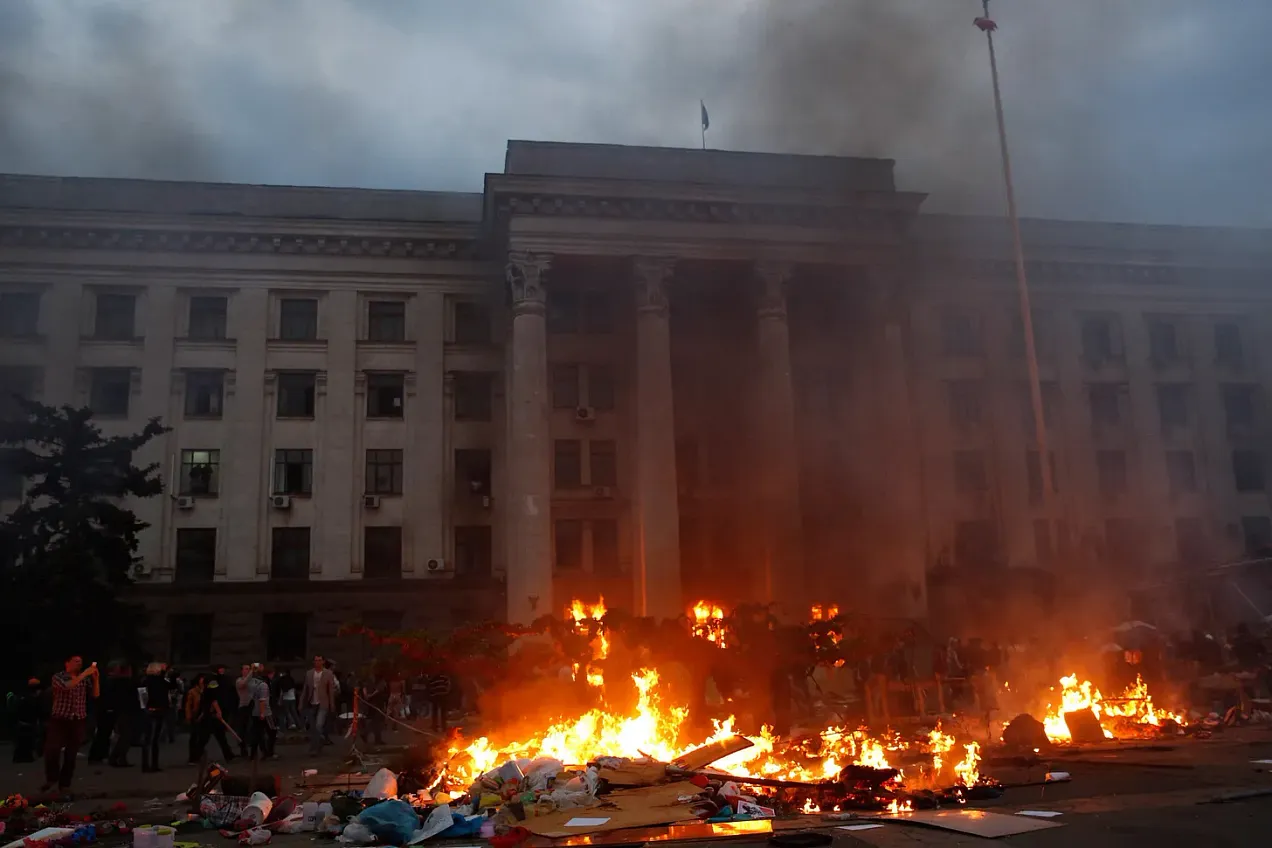
The May 2nd 2014 Odessa massacre
In the Odessa massacre’s wake, prominent Svoboda representative Iryna Farion - whose room in Hotel Ukraina served as a sniper’s nest during the Maidan false flag massacre - cheered the killings, declaring “let the devils burn in hell…Bravo!” She herself was murdered in July 2024, despite being under intensive SBU surveillance. It’s certainly quite some coincidence that, at a time the walls are evidently closing in on Zelensky, three individuals who could testify most potently to the events that brought the Maidan regime into being are now dead.
https://www.kitklarenberg.com/p/the-neo ... w-too-much
